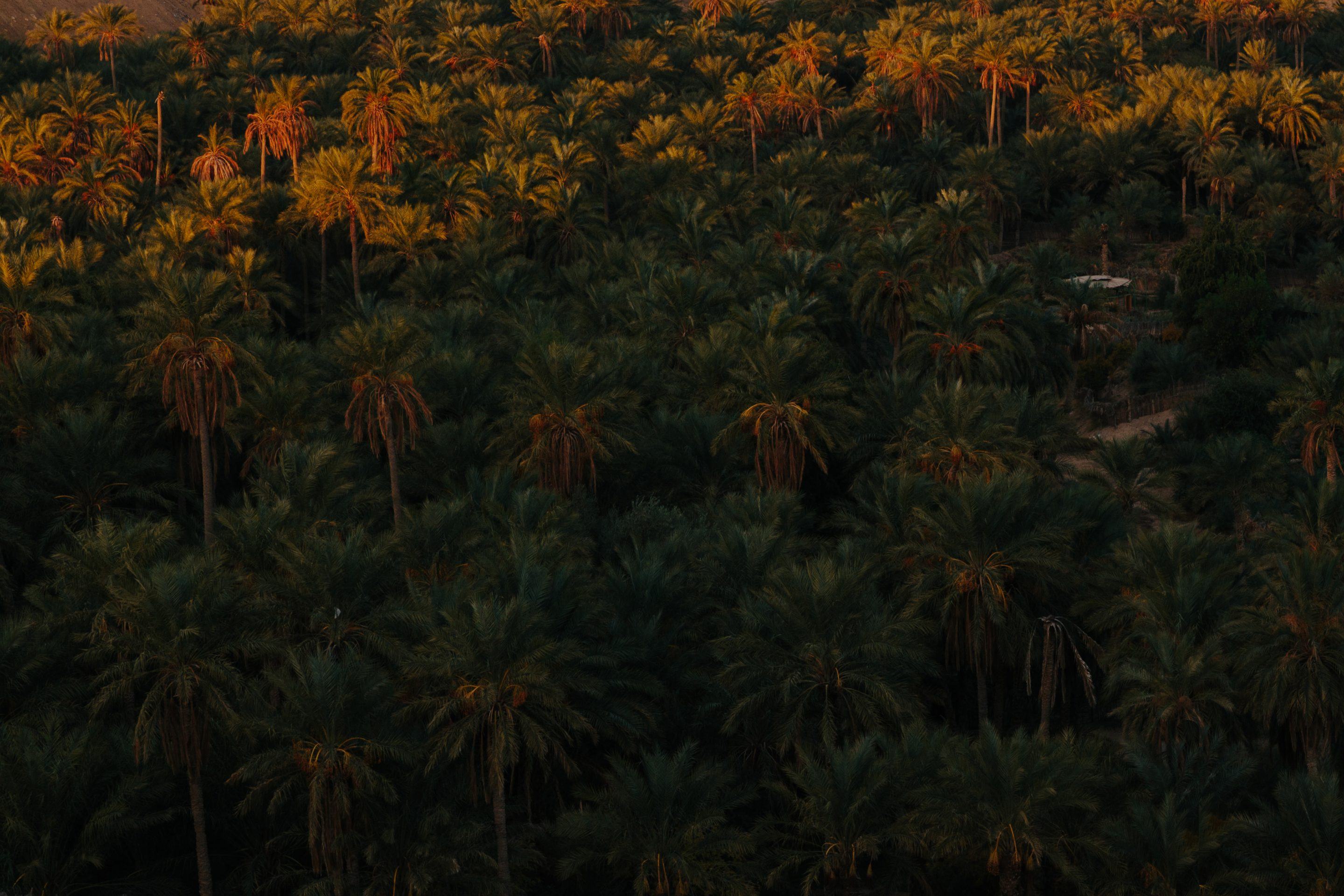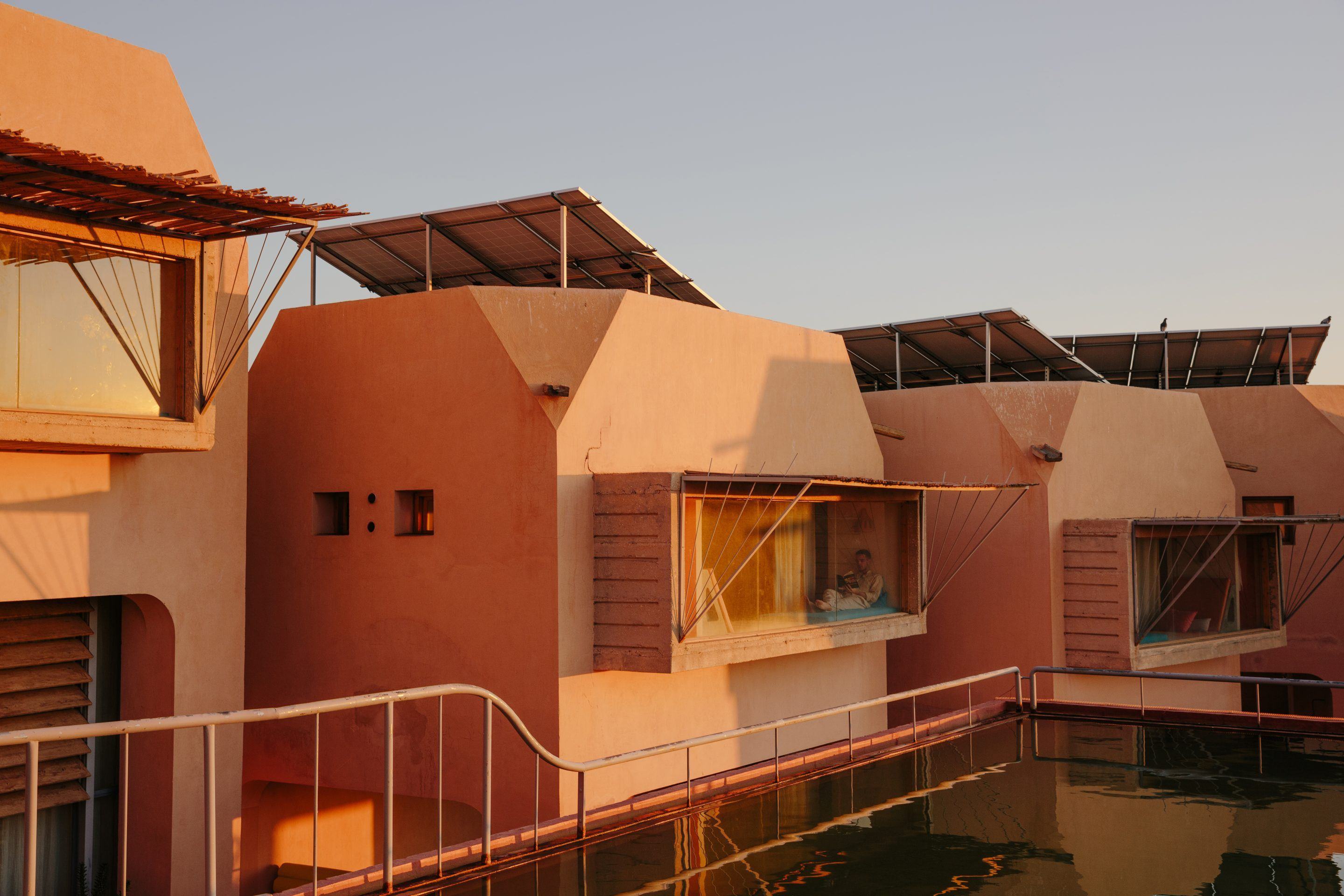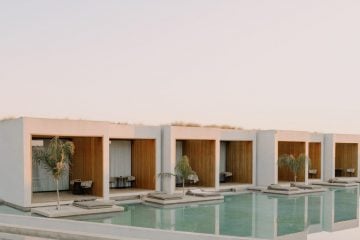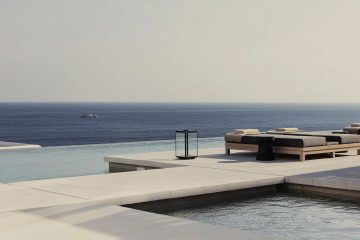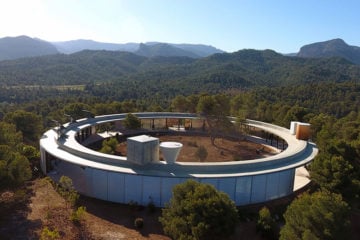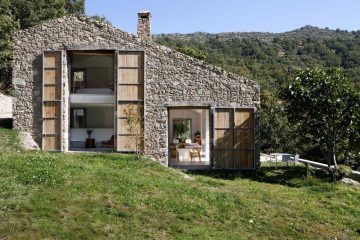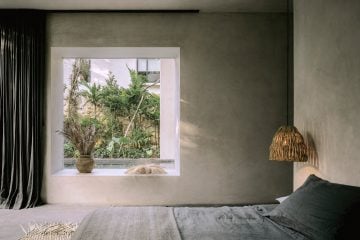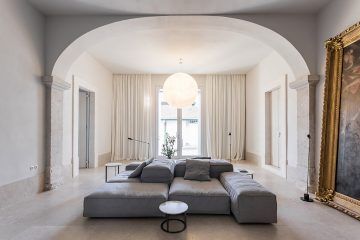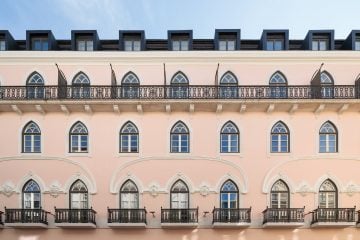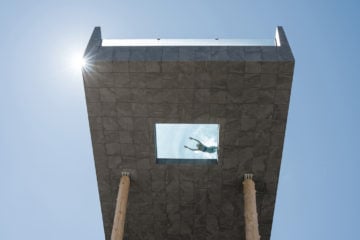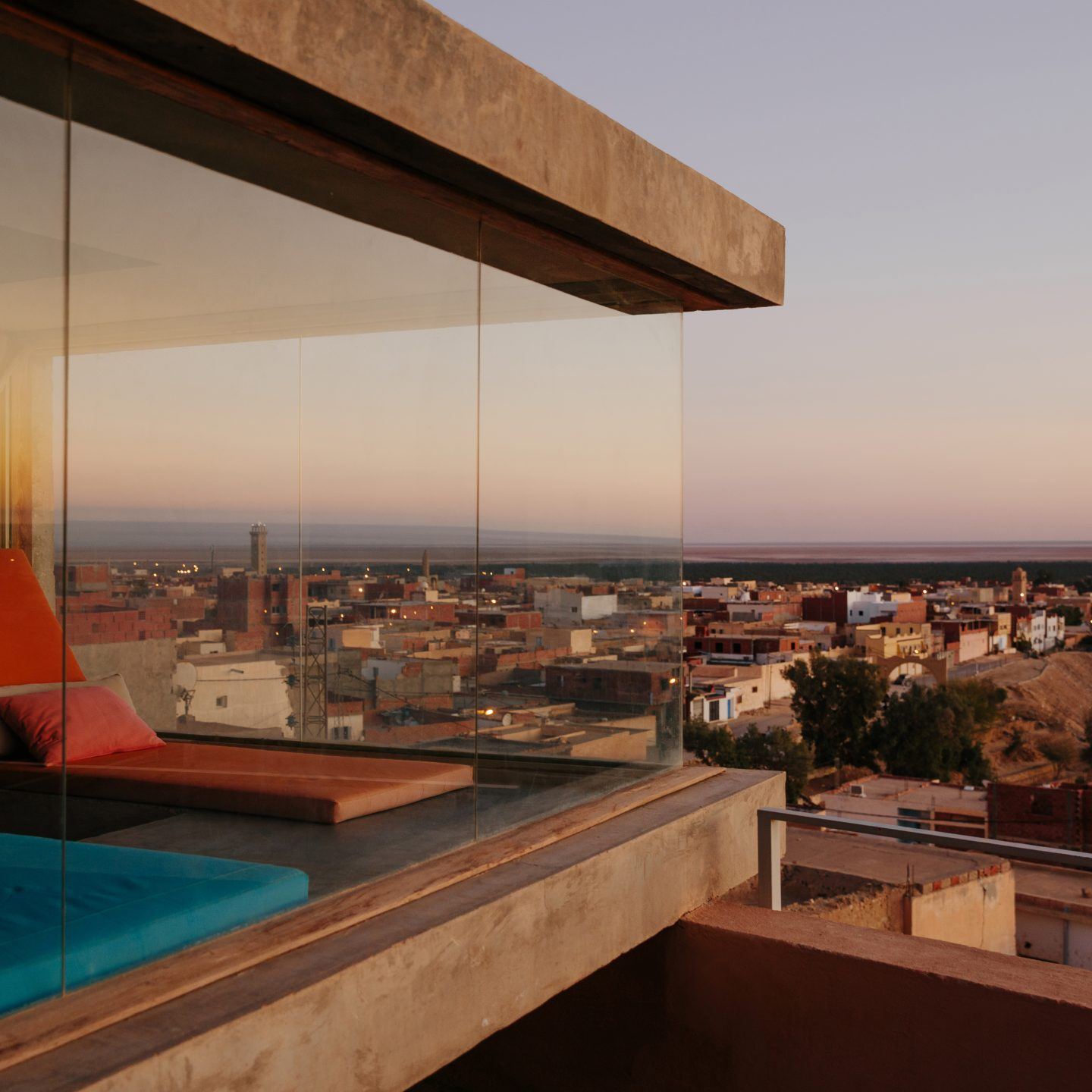
DAR HI · Nefta, Tunisia
- Name
- DAR HI
- Images
- Marina Denisova
- Words
- Devid Gualandris
A jewel of contemporary design and a village unto itself, the eco-retreat ‘DAR HI’ is a place where worries are forgotten and the feeling of peace is as heavy as the Tunisian spring heat, sinking into the body and slowing the mind. We were invited to sit back on the ochre-colored terrace overlooking Nefta’s date palm groove for an otherworldly experience.
On the vast communal terrace, the expanse of views include the palms of a sunken desert oasis, the mesh of the town’s narrow streets, the large saline lake, and the desert dunes teasing on the horizon—each vista competing for attention as a stunning postcard image. At the frontier of the Sahara Desert, this is the perfect setting for tranquillity and scenery, for wellness without distraction, and for ‘DAR HI’: a charming guest house and green resort in the Tunisian oasis town of Nefta. Resting on the dry saline lake Chott El Jerid, and home to 21000 people, Nefta is a small town mostly known as the spiritual home of Sufism, a mystical branch of Sunni Islam, and for its hot-springs-fed oasis—a local gem and inner city respite, restored to its former glory by a rehabilitation program led by UNESCO.
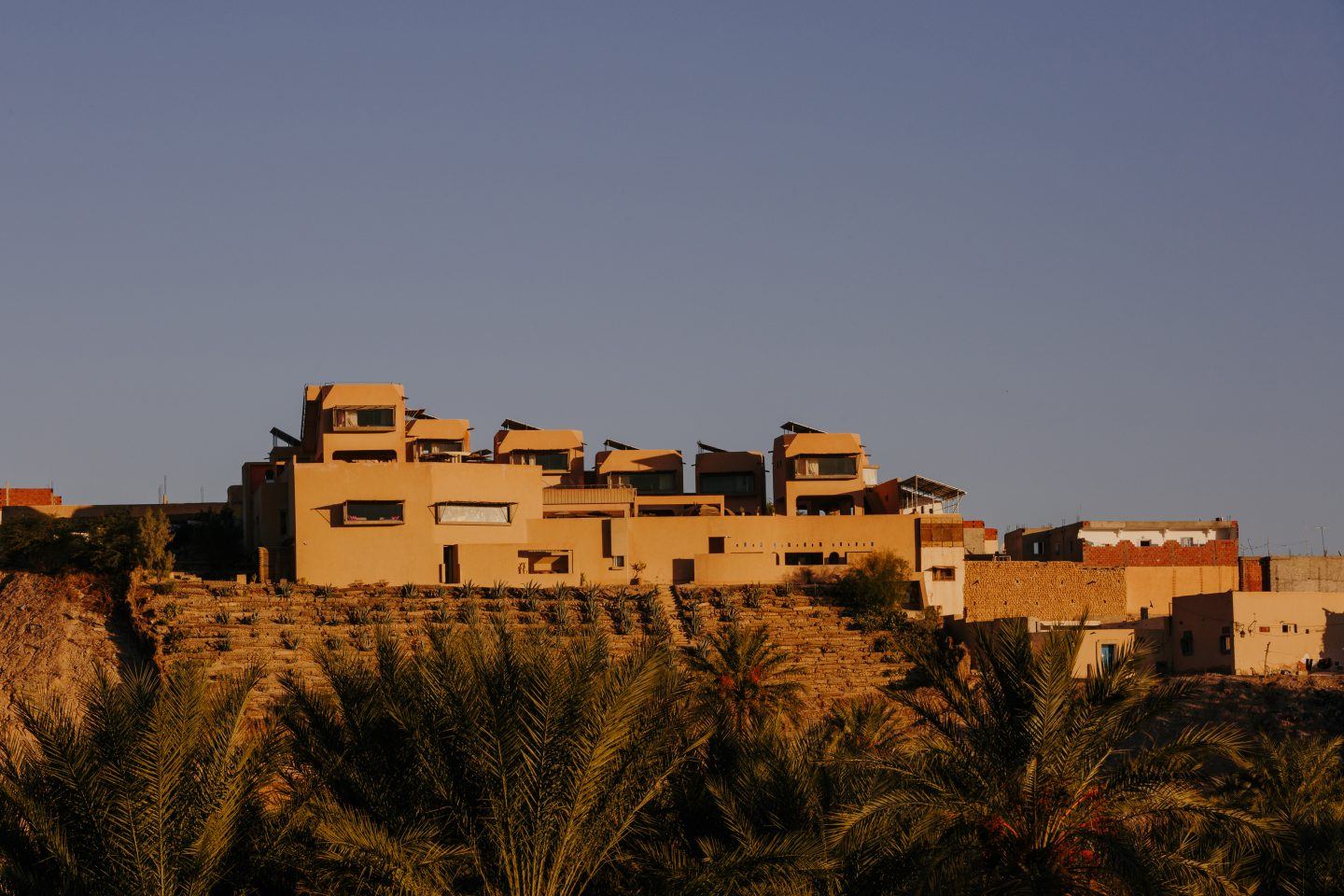
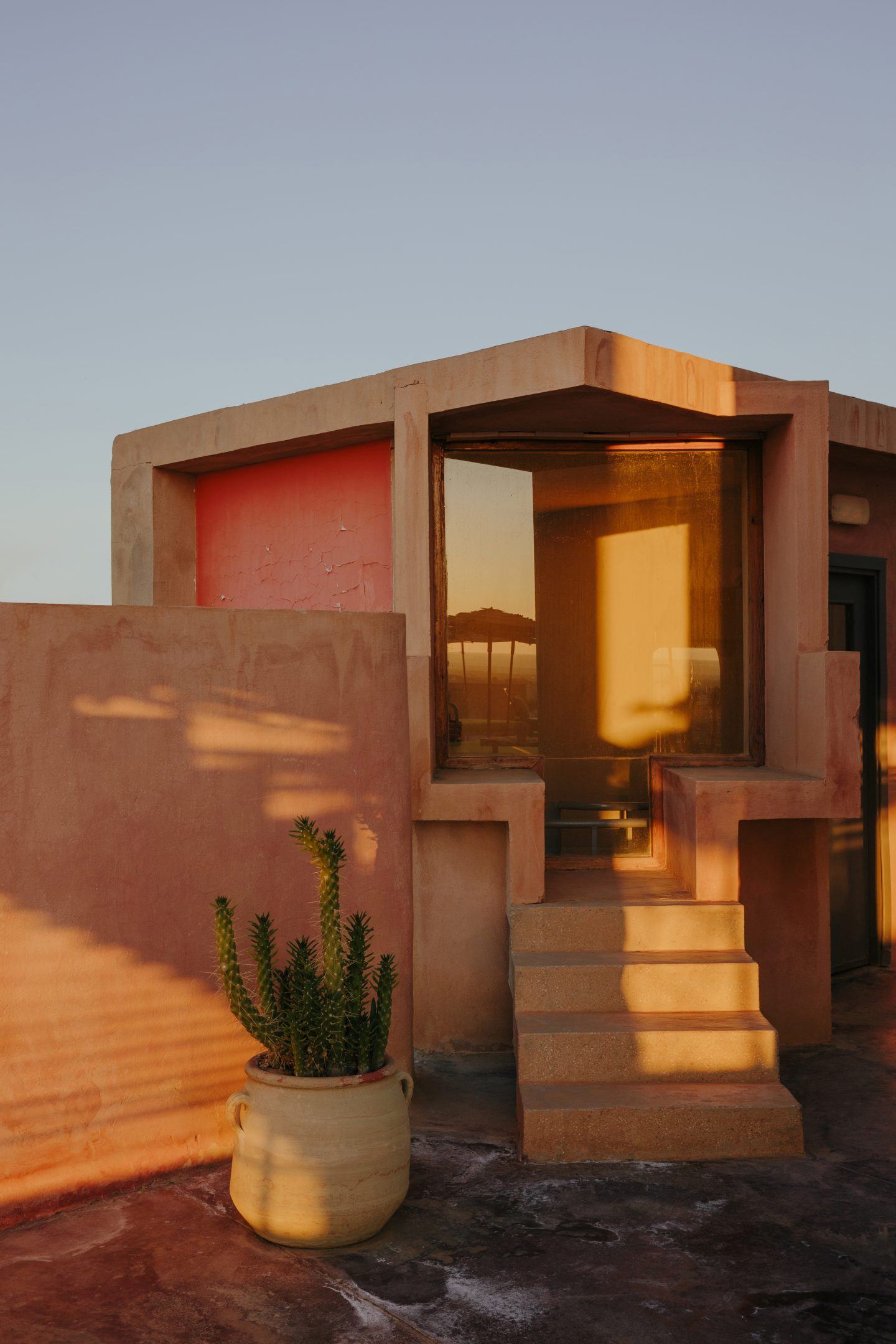
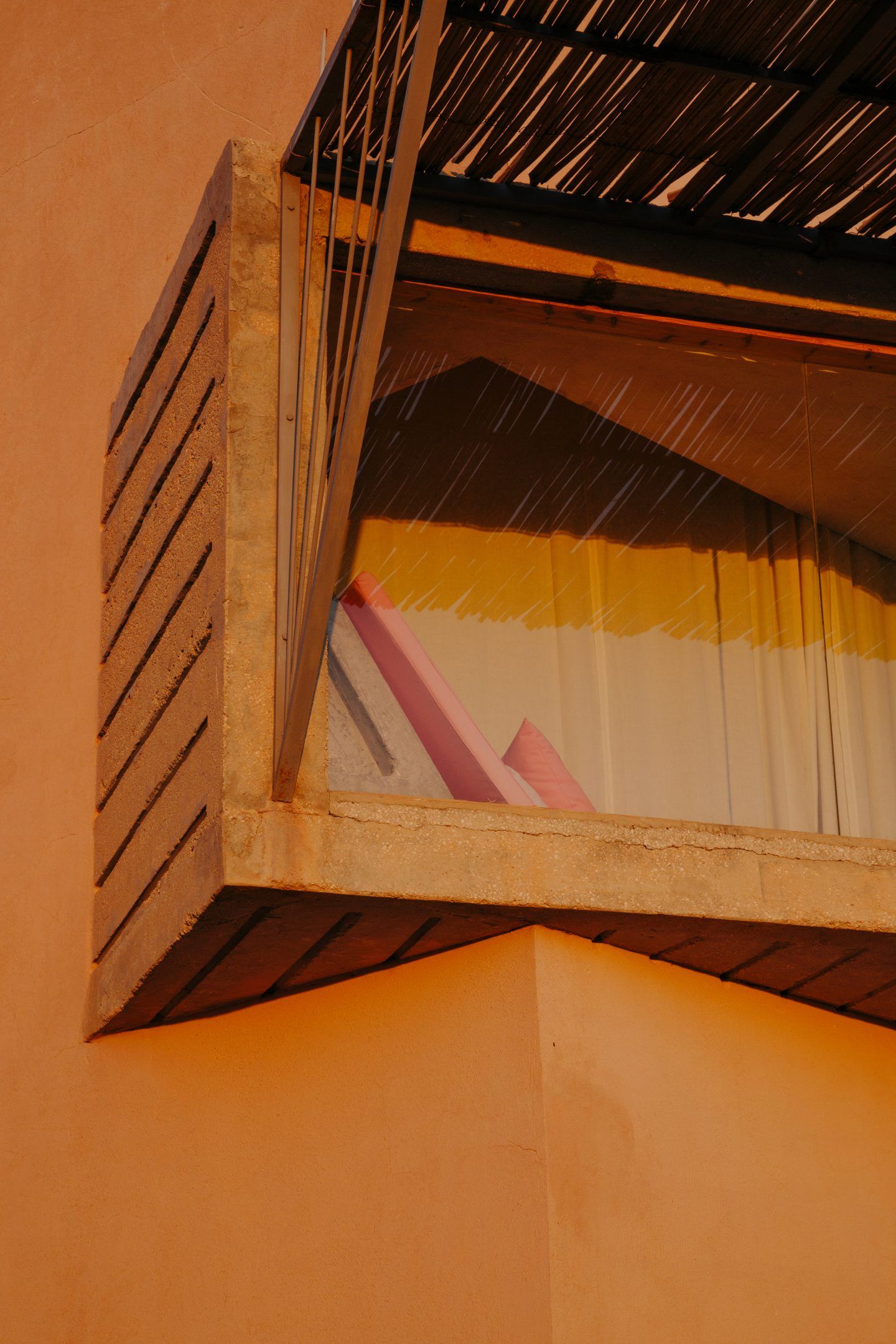
“DAR HI is a hotel in a stunning oasis in the middle of the Tunisian desert, a retreat with a minimalist approach and a meditative spirit,” explains Patrick Elouarghi, one of the visionary minds behind and owners of the hotel. “The region of Nefta breathes tranquillity, repose, and seclusion. A spirituality emerges from the heart of the town. There is a special energy in this region,” he shares. ‘DAR HI’ is the result of Elouarghi’s collaboration with longtime project partner Philippe Chapelet. Their work is driven by an eagerness to reinvent travel experiences. “We started as hoteliers with the goal to not be like others. We want our guests to have a contemporary experience. This is something really important to us,” he tells us.
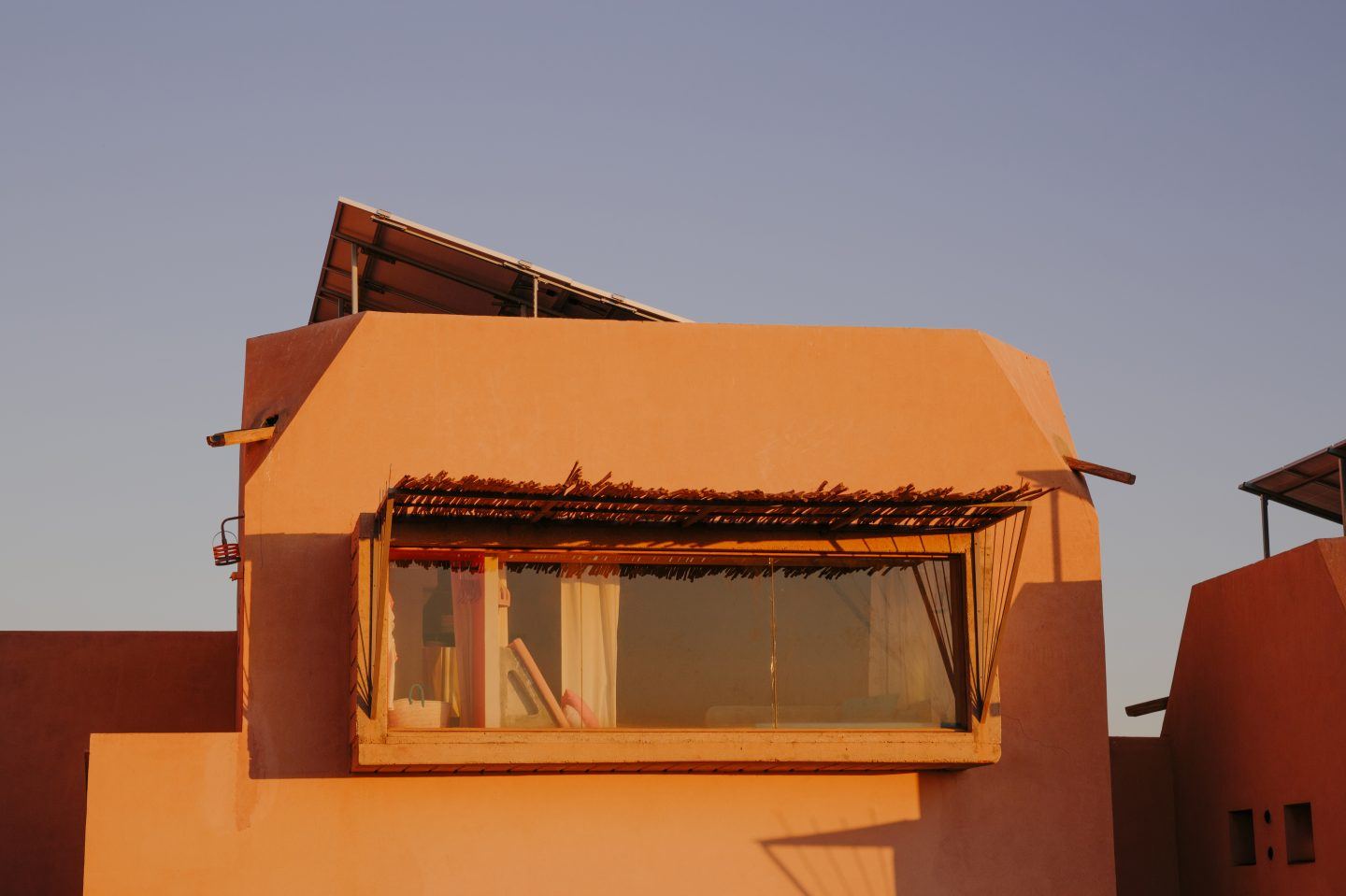
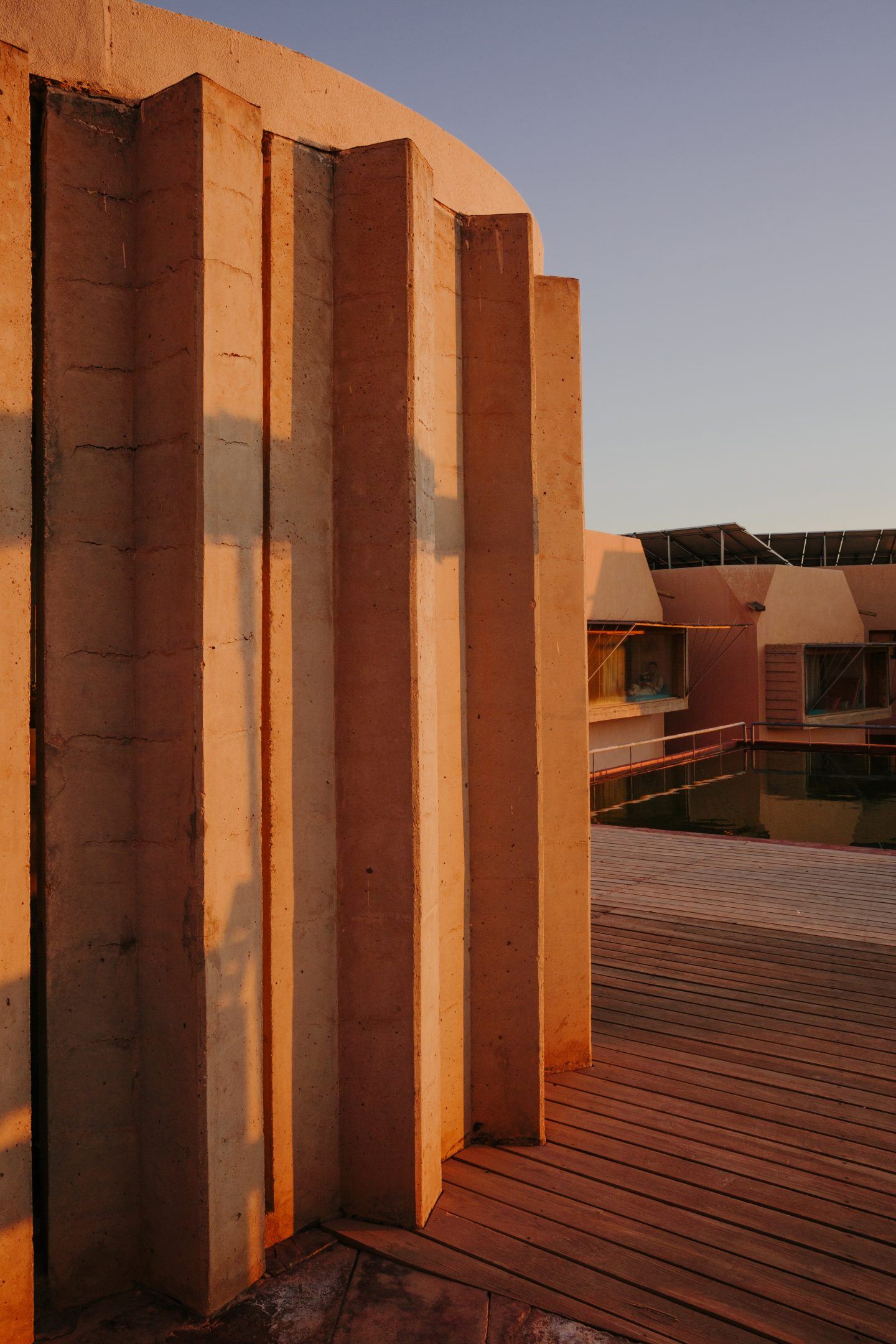
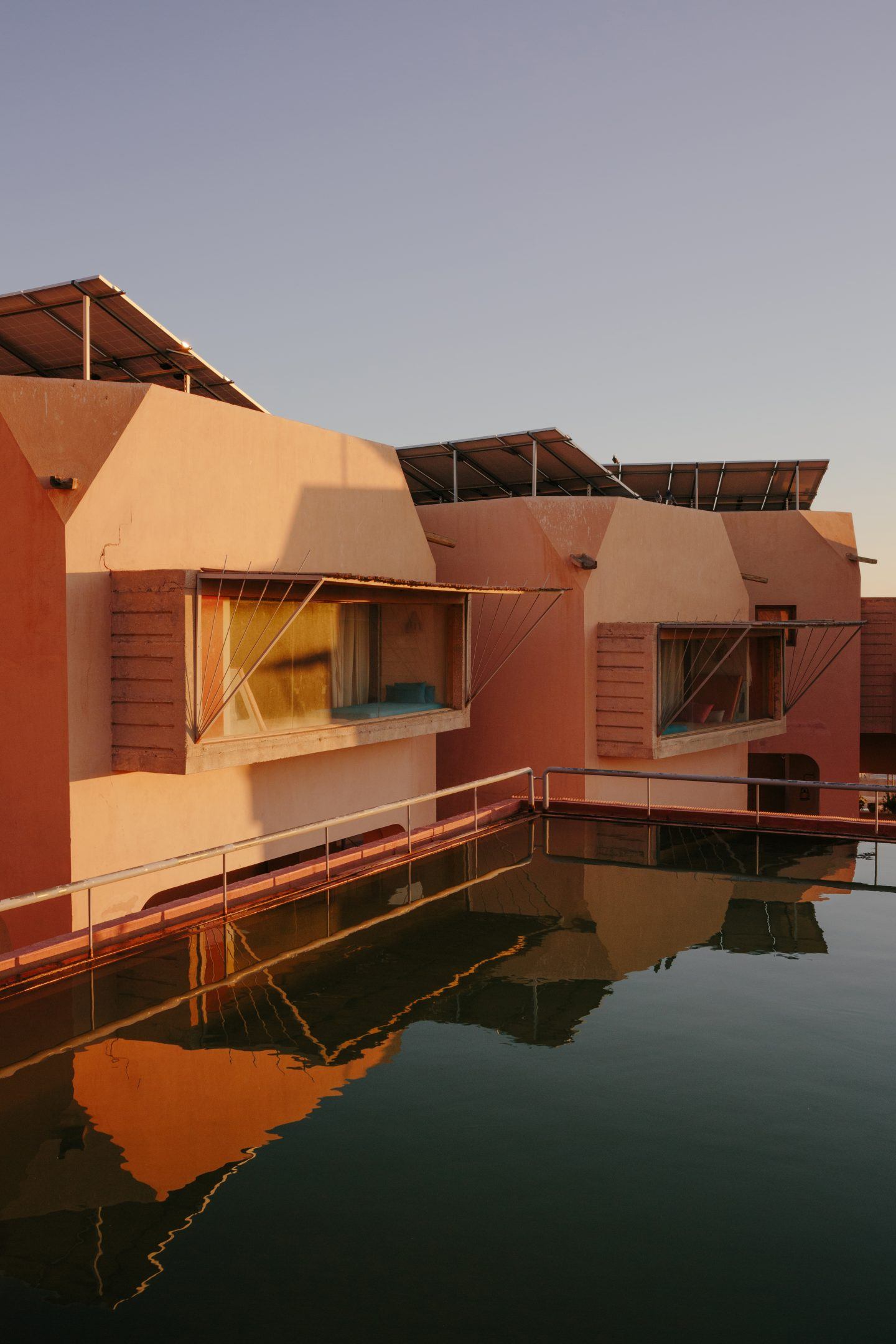
It's an innovative and ecological space that integrates well into its surroundings
Far from conventionality, ‘DAR HI’ was imagined with the same ambition of their previous hotels, the HI Hotel and the HI Matic: to transcend clichés of luxury hotels in favor of an innovative and ecological space that integrates well into its surroundings. Concepts like this are still new to the town of Nefta. Built in 2010, ‘DAR HI’ was ambitious and forward thinking. “We were trying to bring something more to Southern Tunisia, a region that has been somewhat abandoned for a while. We like to pose challenges to this region, such as the Les Dunes Electroniques, a music festival we founded, which, together with ‘DAR HI’, contributes to the region’s development and promotion, helping it to slowly regain its sparkle,” he says.
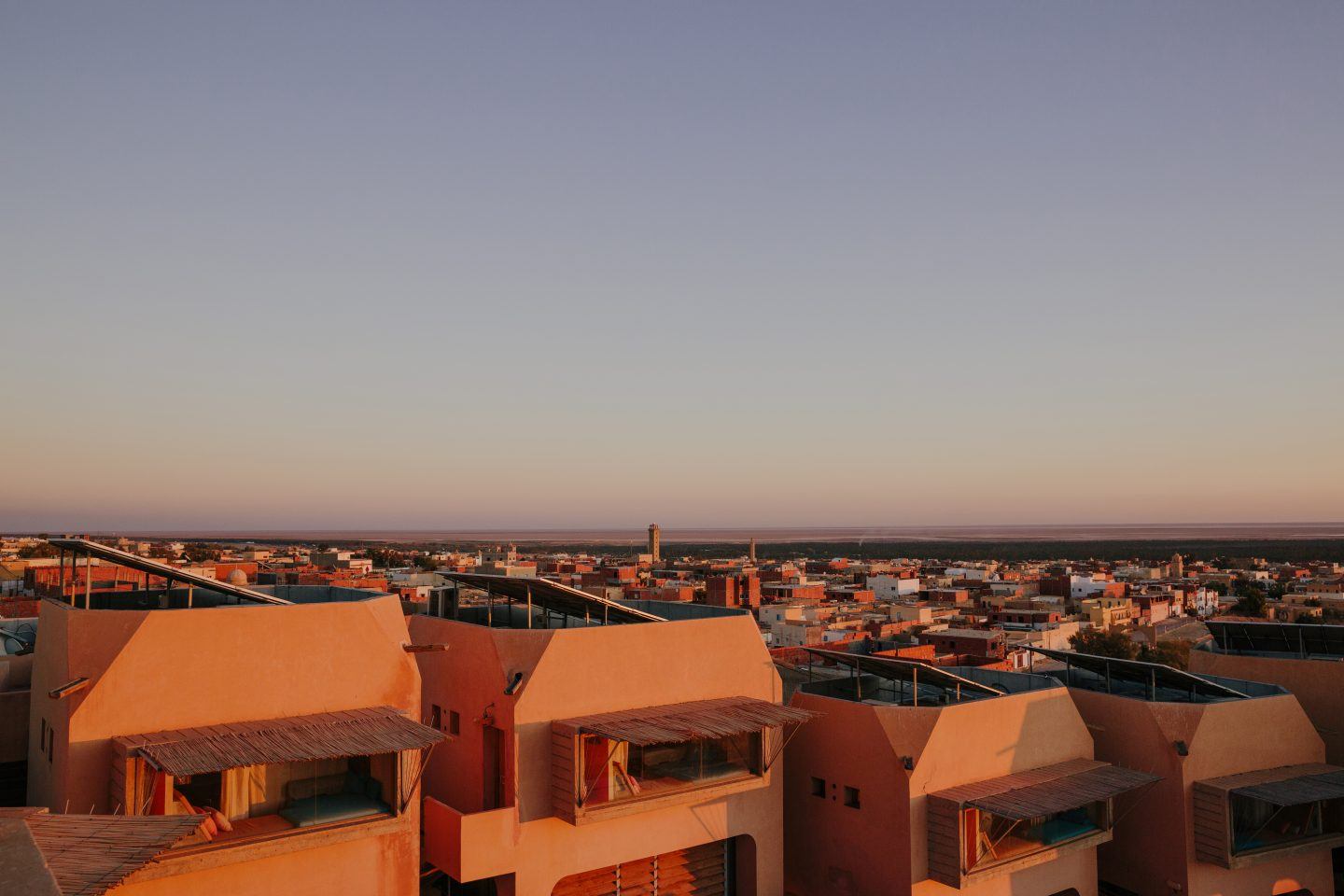
‘DAR HI’ is the embodiment of the power of collaboration and the drive for innovation. It is the first architectural project of French industrial designer Matali Crasset—whose considered work is found across Europe—and her second collaboration with the hoteliers. “We have been collaborating with Crasset since 2001, and always in perfect harmony,” Elouarghi tells us. The three share an enthusiasm for modern design strategies that go beyond individual visions. “The human aspect is the center of our collaborative work. That and a contemporary approach to design,” he continues. Emblematic of her design ethos, Crasset’s approach to ‘DAR HI’ combines material functionality, the sophistication of Tunisia’s architectural traditions, and a contemporary and culturally sensitive aesthetic. Characterized by a contrast of eclecticism, ‘DAR HI’ is a balancing act between modern and indigenuous design; and a coalescence of European, African, and Arabian architectural influences.
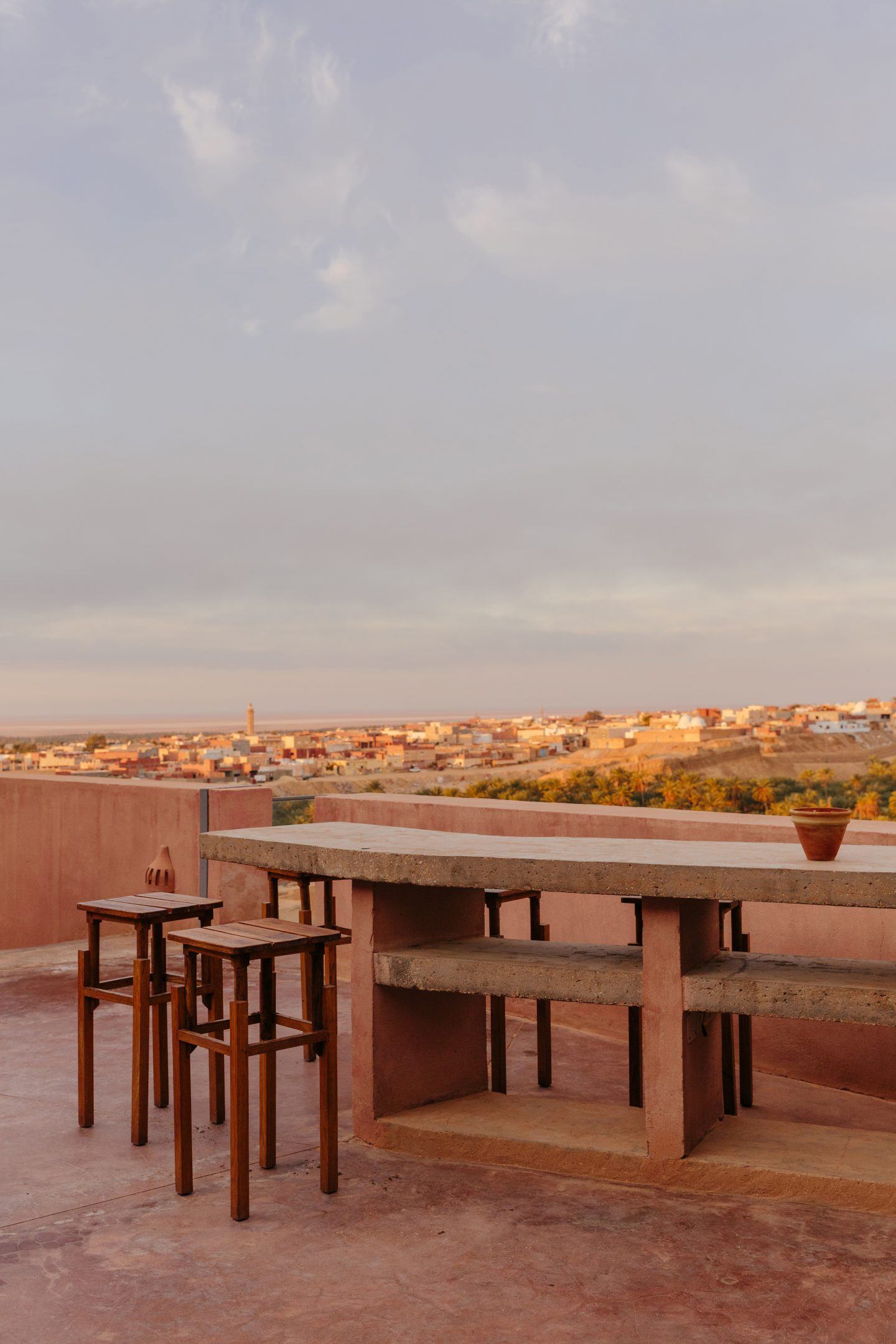
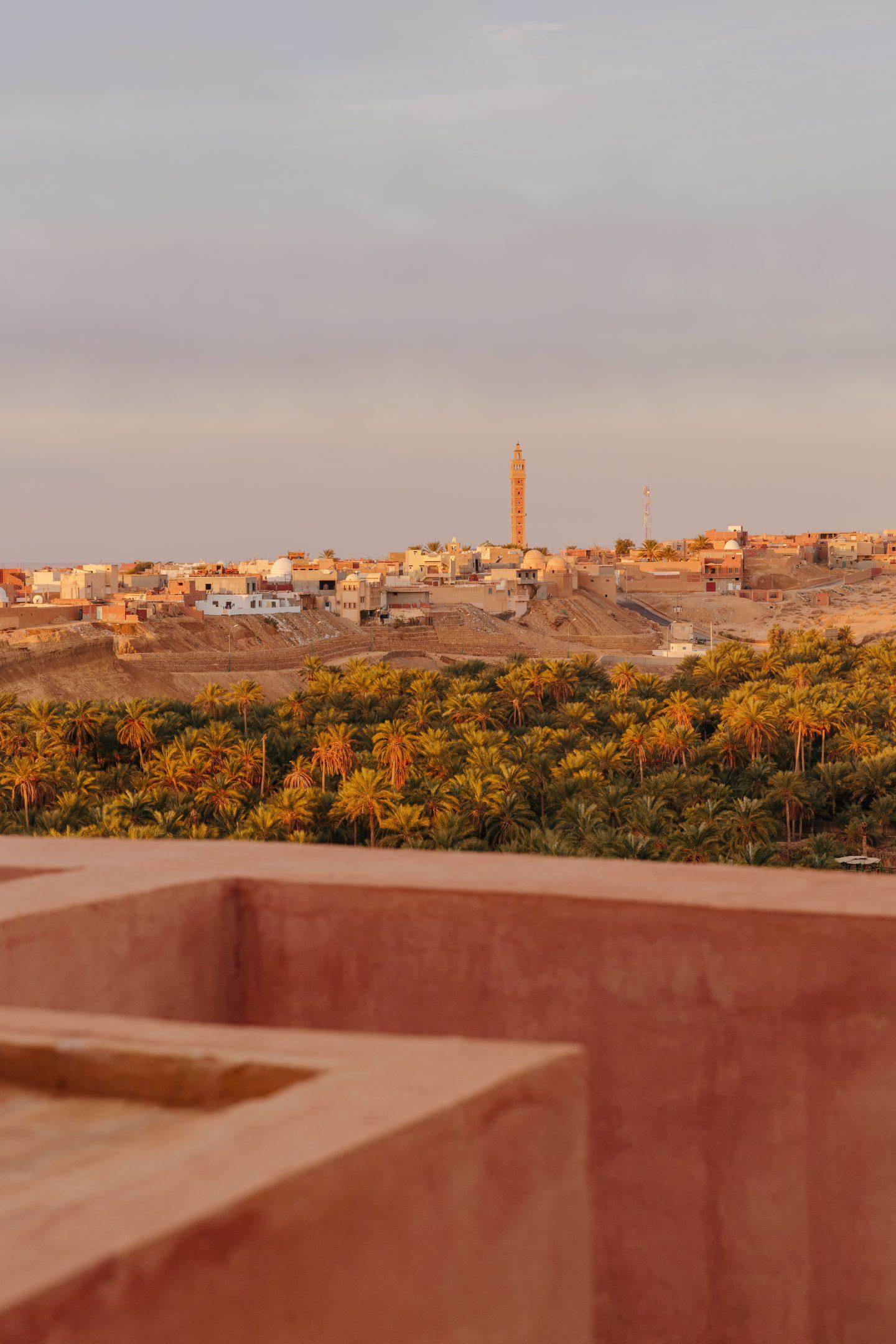
“All spaces are uniquely thought of with taste and originality”
The hotel is intentionally laid out like a village emerging from the sand; structured on pillars and enclosed by an exterior surrounding wall—a typical feature of local Tunisian architecture. Its walls are washed in a muted ochre-peachy tone, setting the site apart from the neighboring brick-patterned buildings. A rooftop swimming pool creates a dramatic counterpoint to the architecture. The overall design language combines a Bauhaus aesthetic with a hint of Californian 60s Modernism and traditional Tunisian riads. Intriguing 19th century Moorish inspired design elements fill the spaces, from the massive wall of the main facade and the small symbolic perforations in the sand-colored walls, to the faience tiles in turquoise, blue, and orange in the steam room. “All spaces are uniquely thought of with taste and originality,” Elouarghi tells us. Inside walls are adorned in bright colors which, while playful, feel appropriate to the setting; stone and glass form sharp angles throughout.
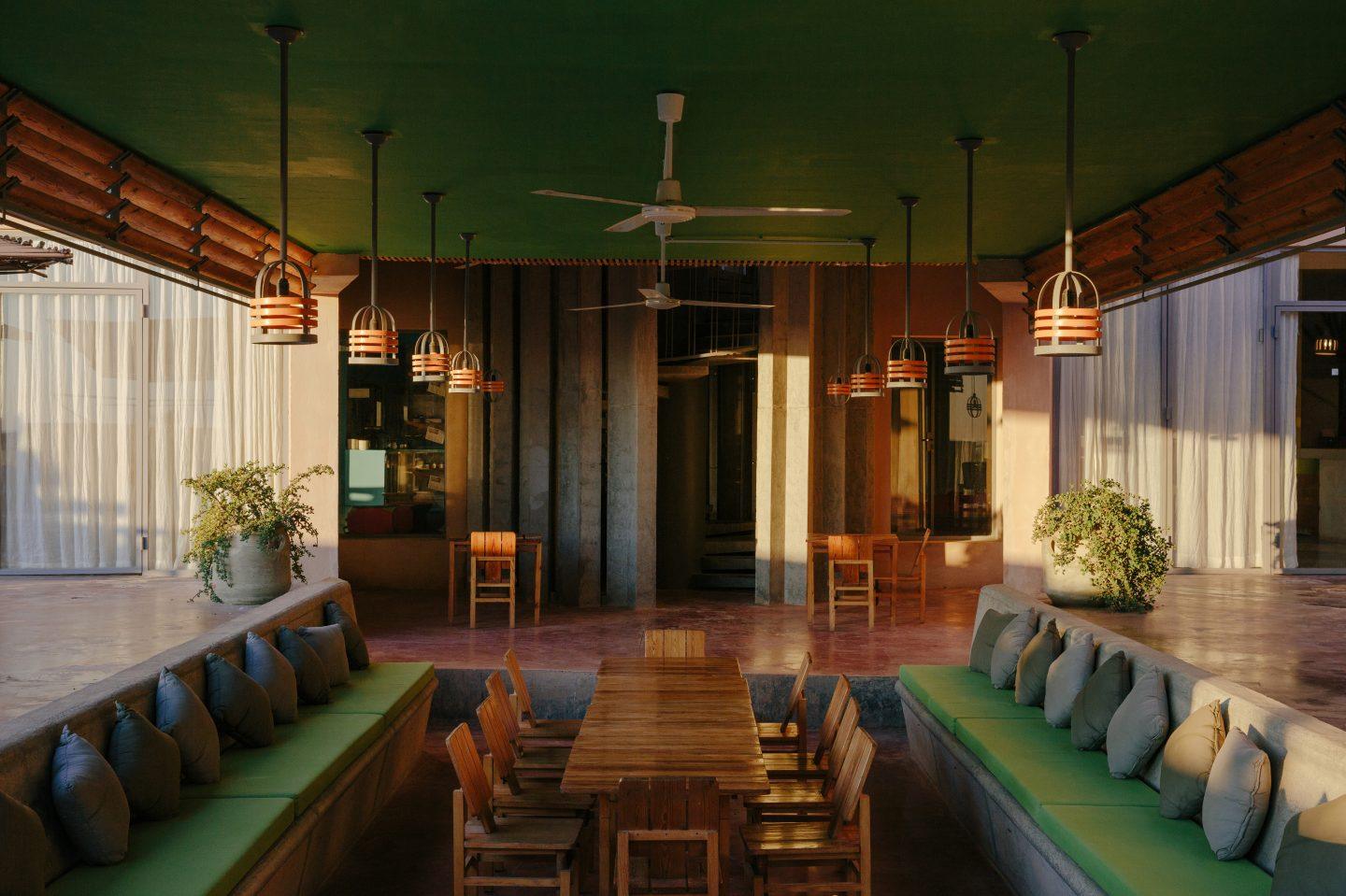
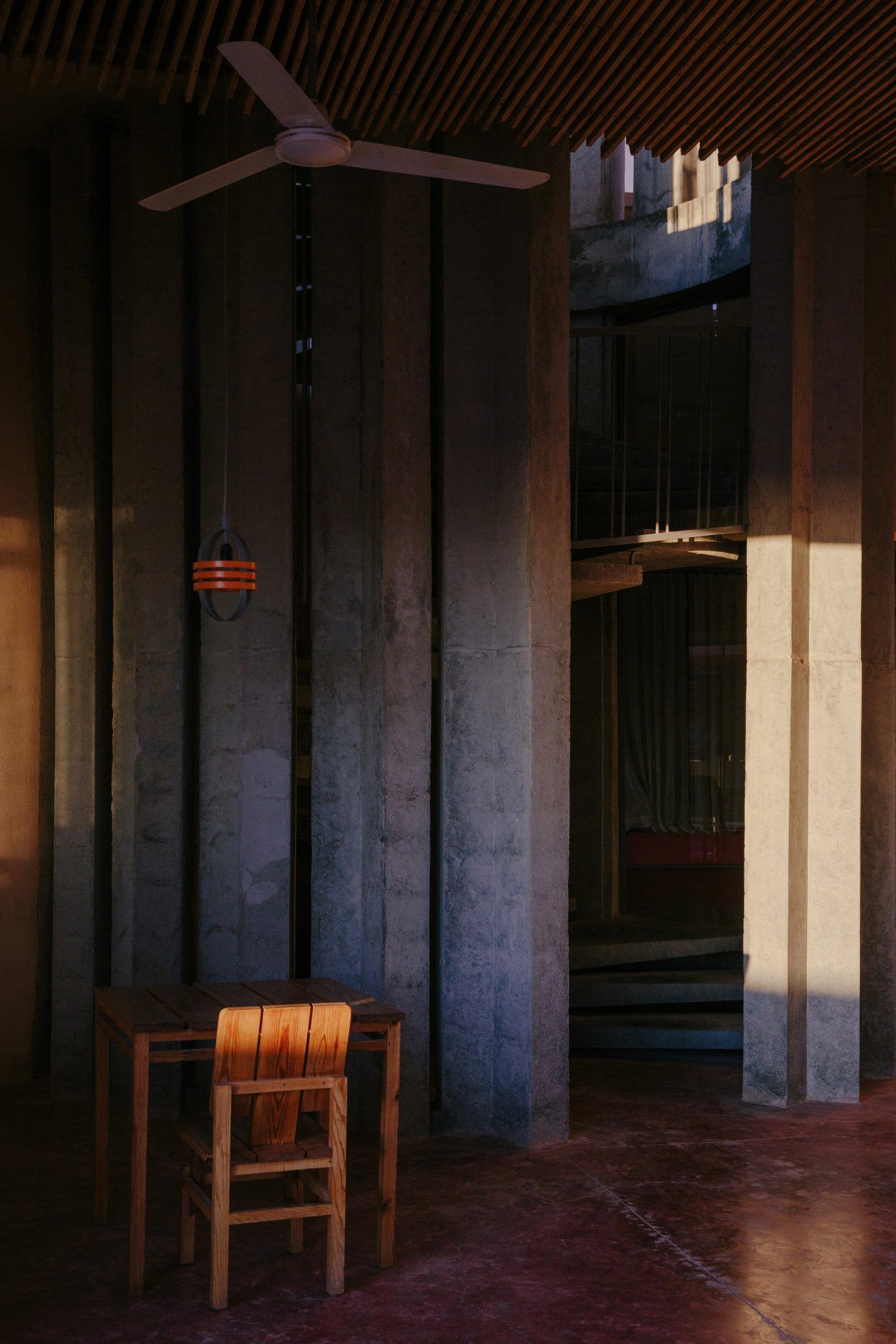
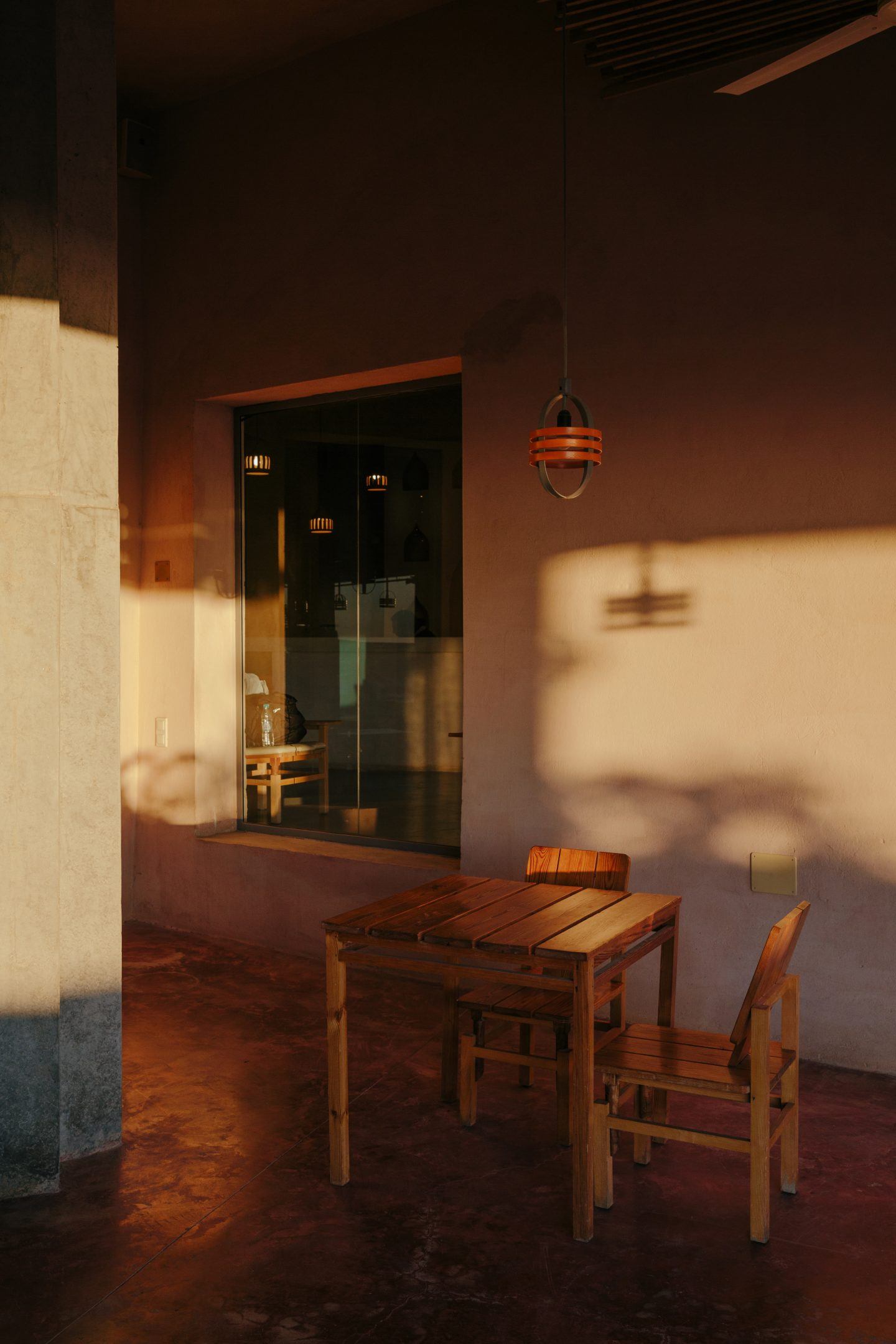
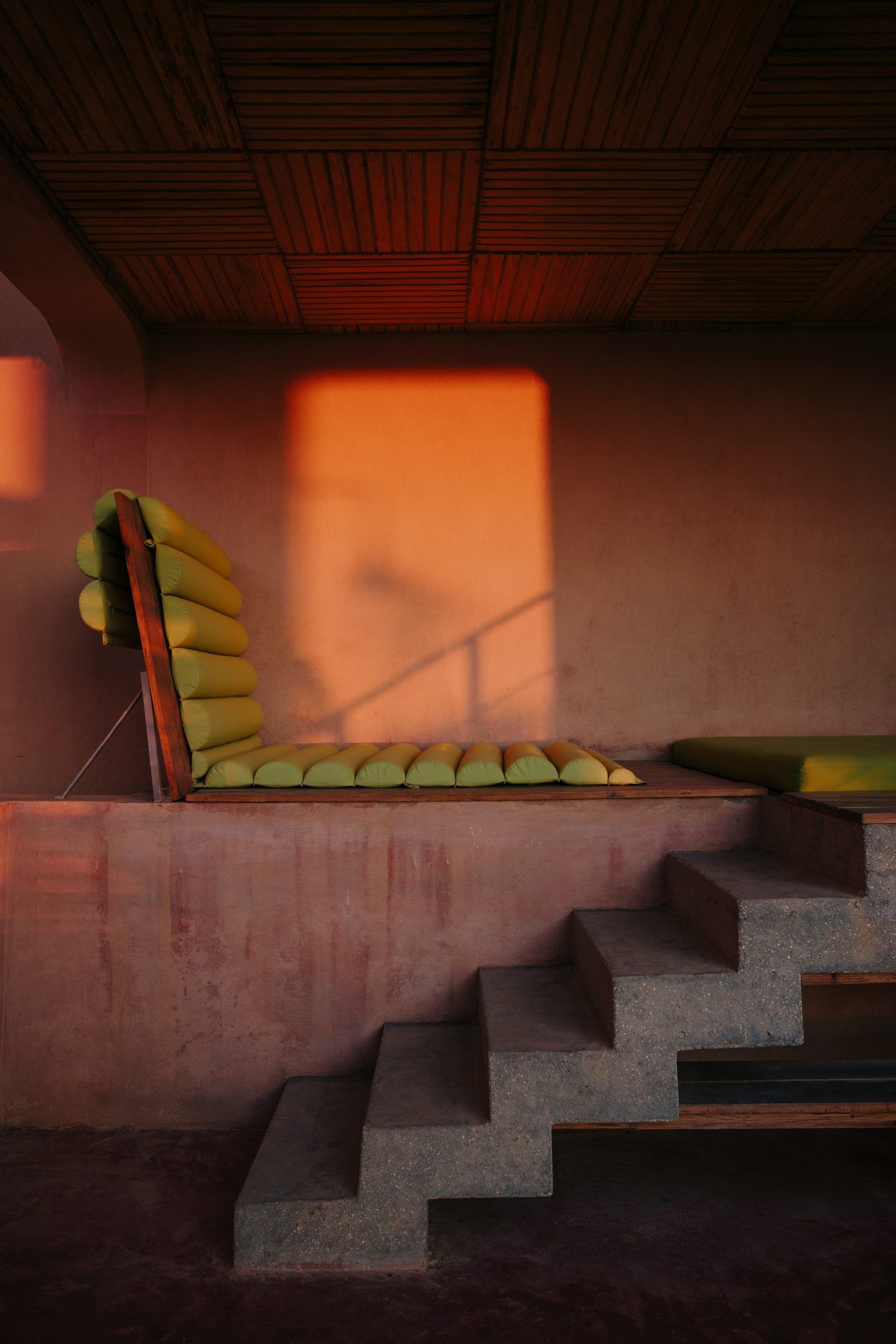
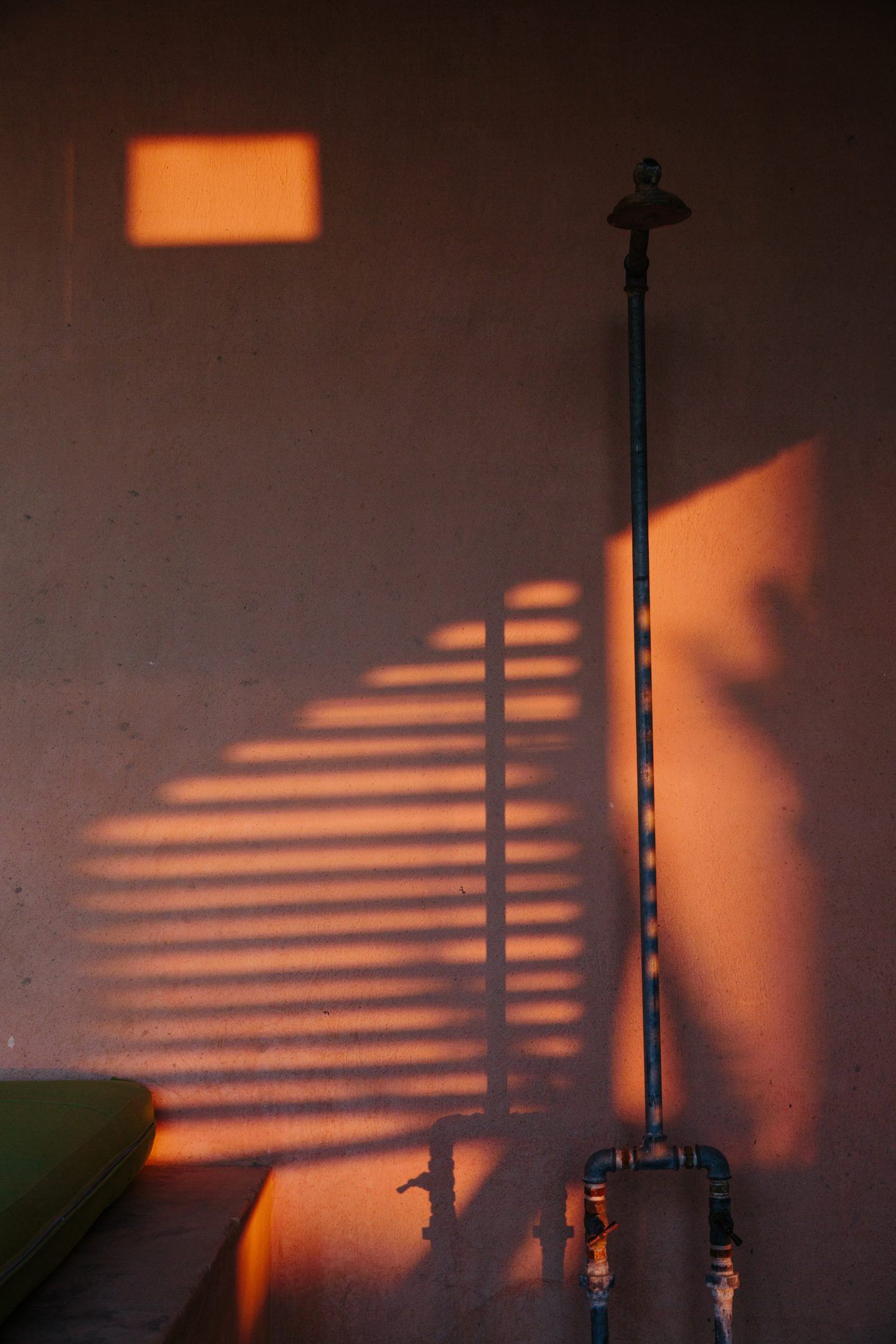
Crasset’s storytelling is present throughout ‘DAR HI’, resulting in lasting spaces, flexible in their unity and sophisticated in form. The hall opens out to an ample space, where a dark gray cement ramp and white balustrade with lime-lit niches leads into a windowed communal flowing area with different zones devoted to different moods and activities. This includes a library with a fireplace, an auditorium, a dining space, a reading nook overlooking the oasis, and a self-serve refreshment alcove looking onto the kitchen. The hotel is fully furnished with items that Crasset designed in collaboration with local craftspeople as a nod to the history and traditions of the region: palm wood chairs and benches, built-in couches, and lampshades populate the common areas. “The furnishings are the result of a multi-level collaboration that functions as a soulful meditation of community and coexistence,” Eoularghi explains.
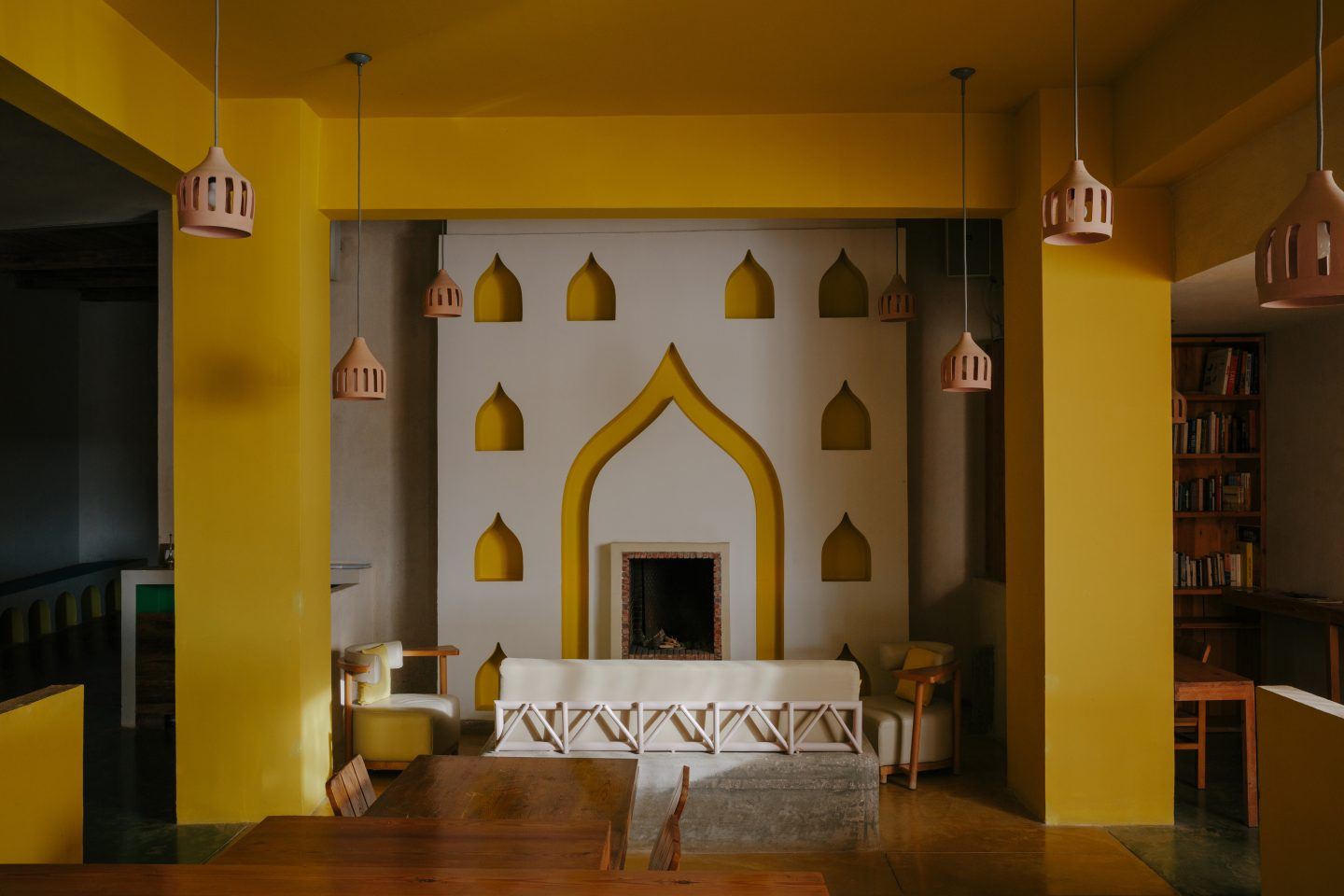
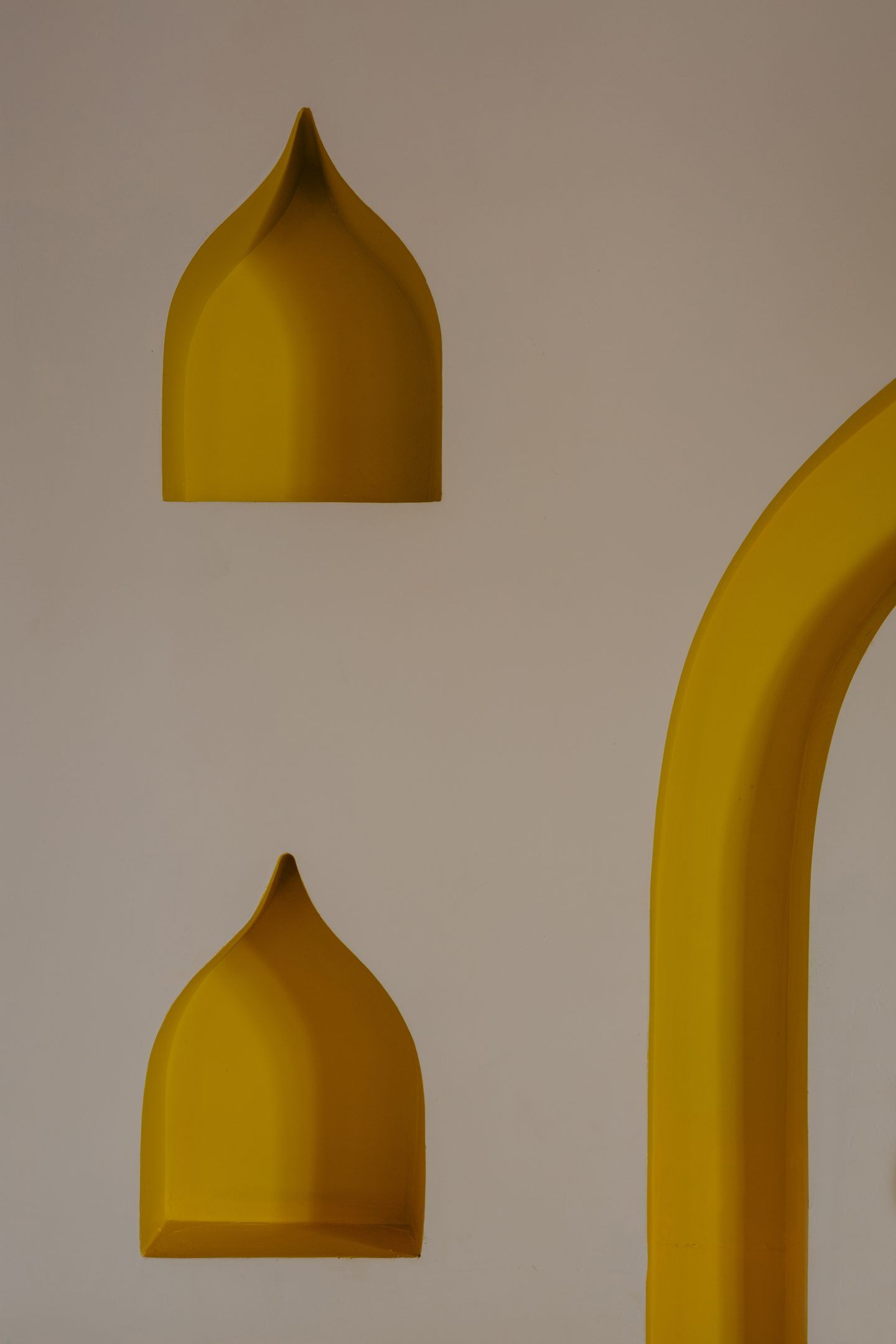
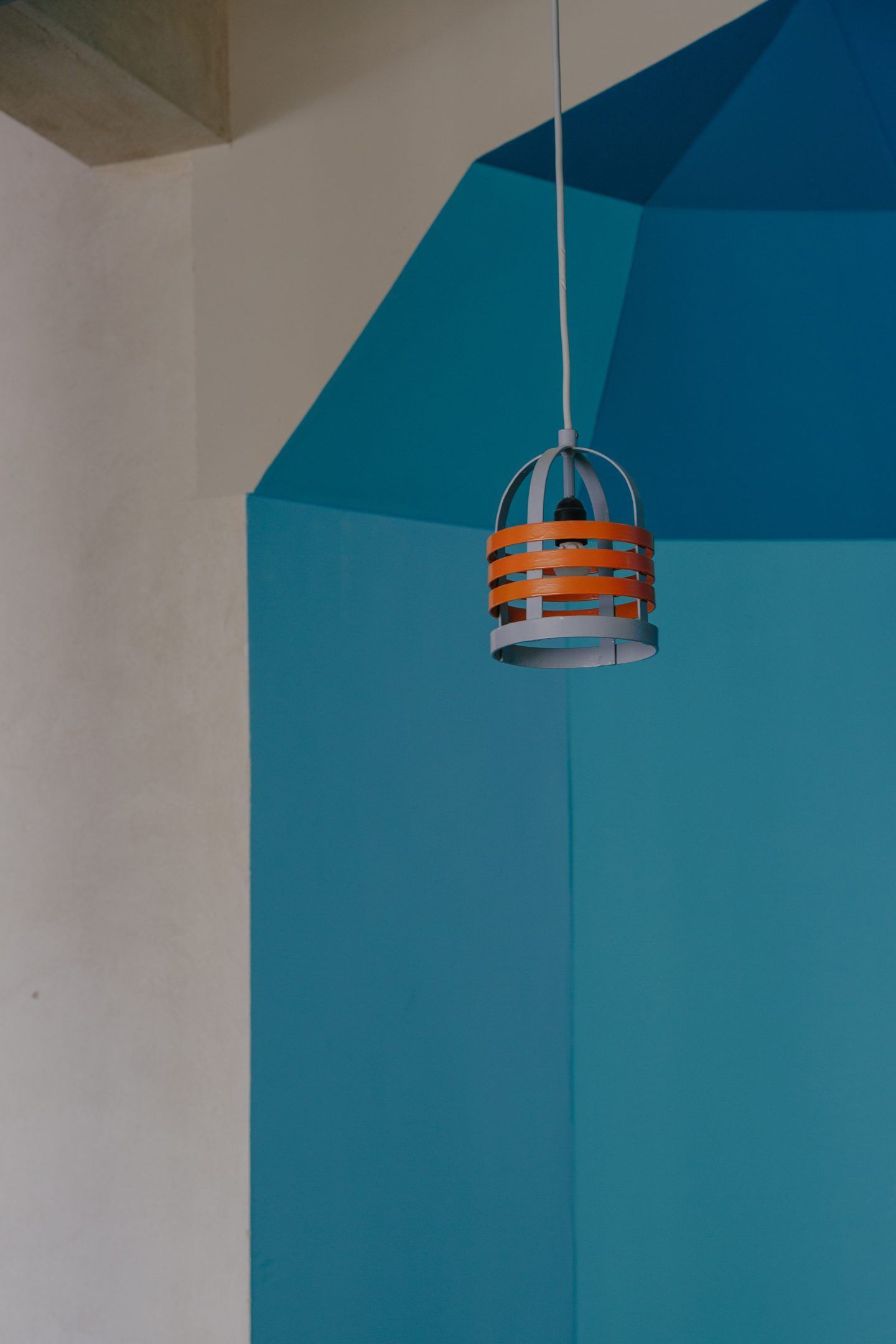
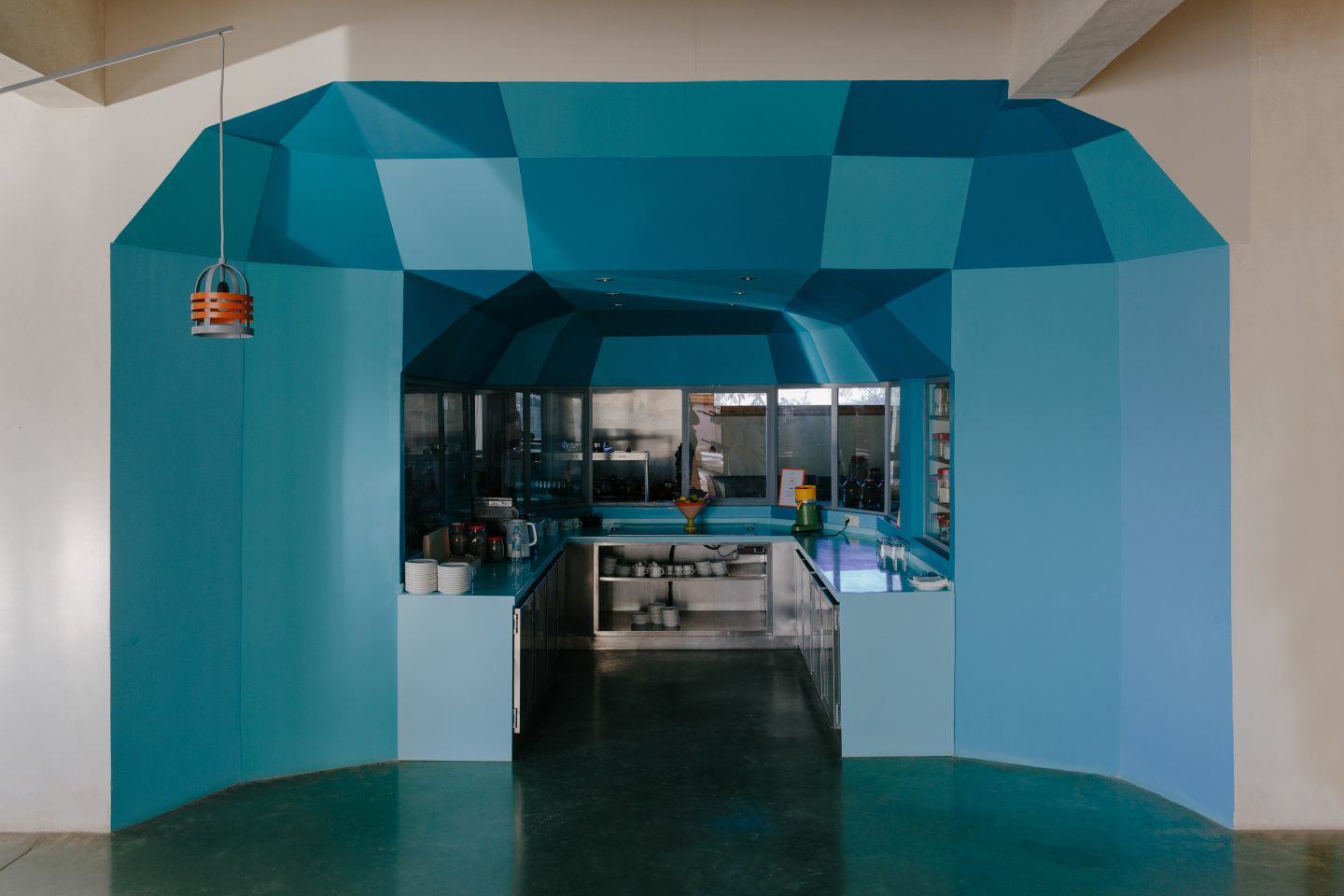

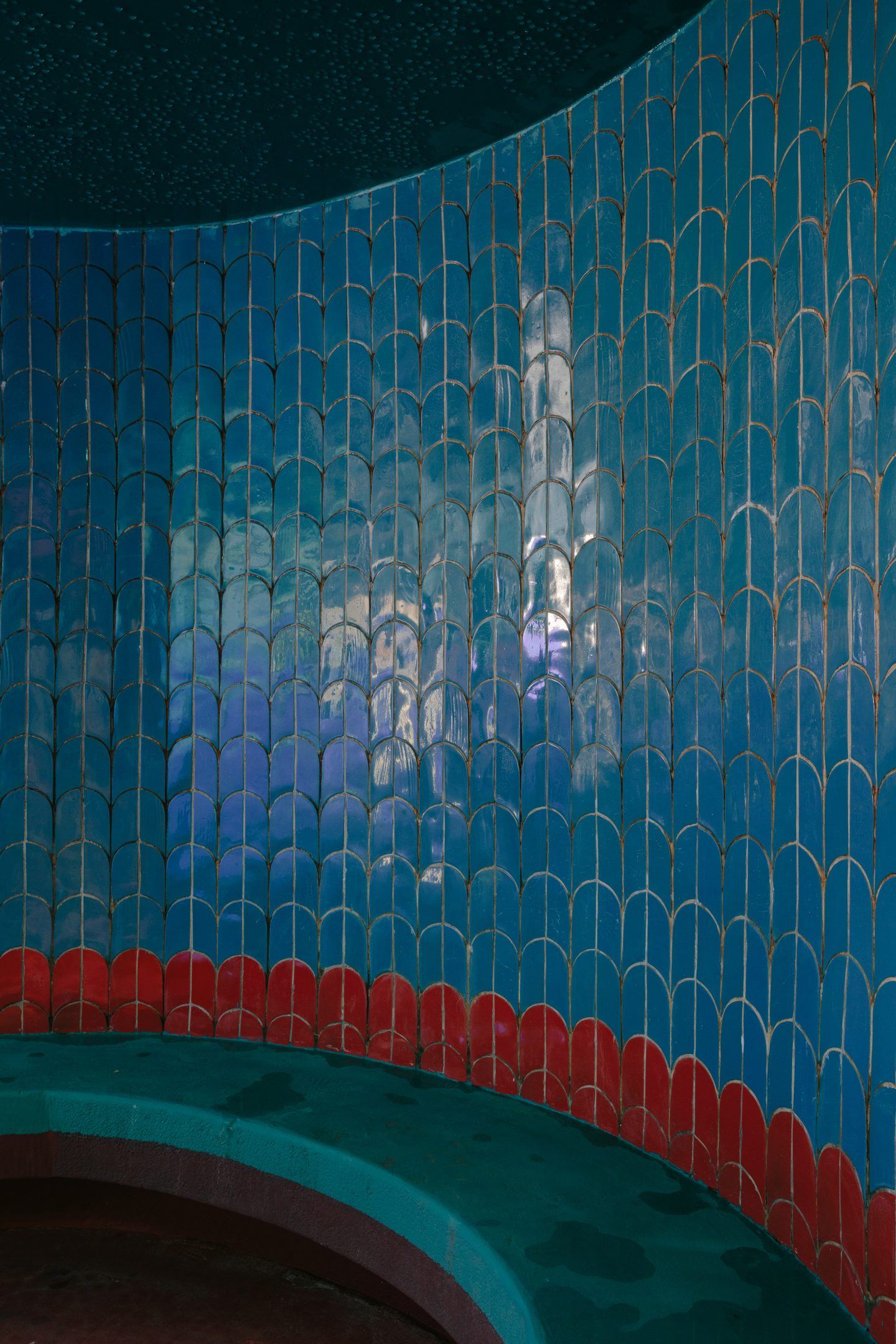
‘DAR HI’’s 18 rooms are simple, functional, and tastefully designed. They are split into three typologies. Distributed across the ochre terrace with miniature canals in the style of Moorish gardens, the Piloti Rooms are built on concrete pillars and feature stunning views of the pool and oasis. Their highlight is a glass-veiled alcove boudoir suspended in a vacuum, where upholstered orange and blue daybeds invite guests to unwind. The Troglodytes Rooms are inspired by the Matmata cave houses; partially underground and designed around a circular area. The Dunes are multi-bedroom open spaces conceived for groups and families, and feature desert designs and gardens. A traditional house, named Dar Malika, completes the accommodation offering.
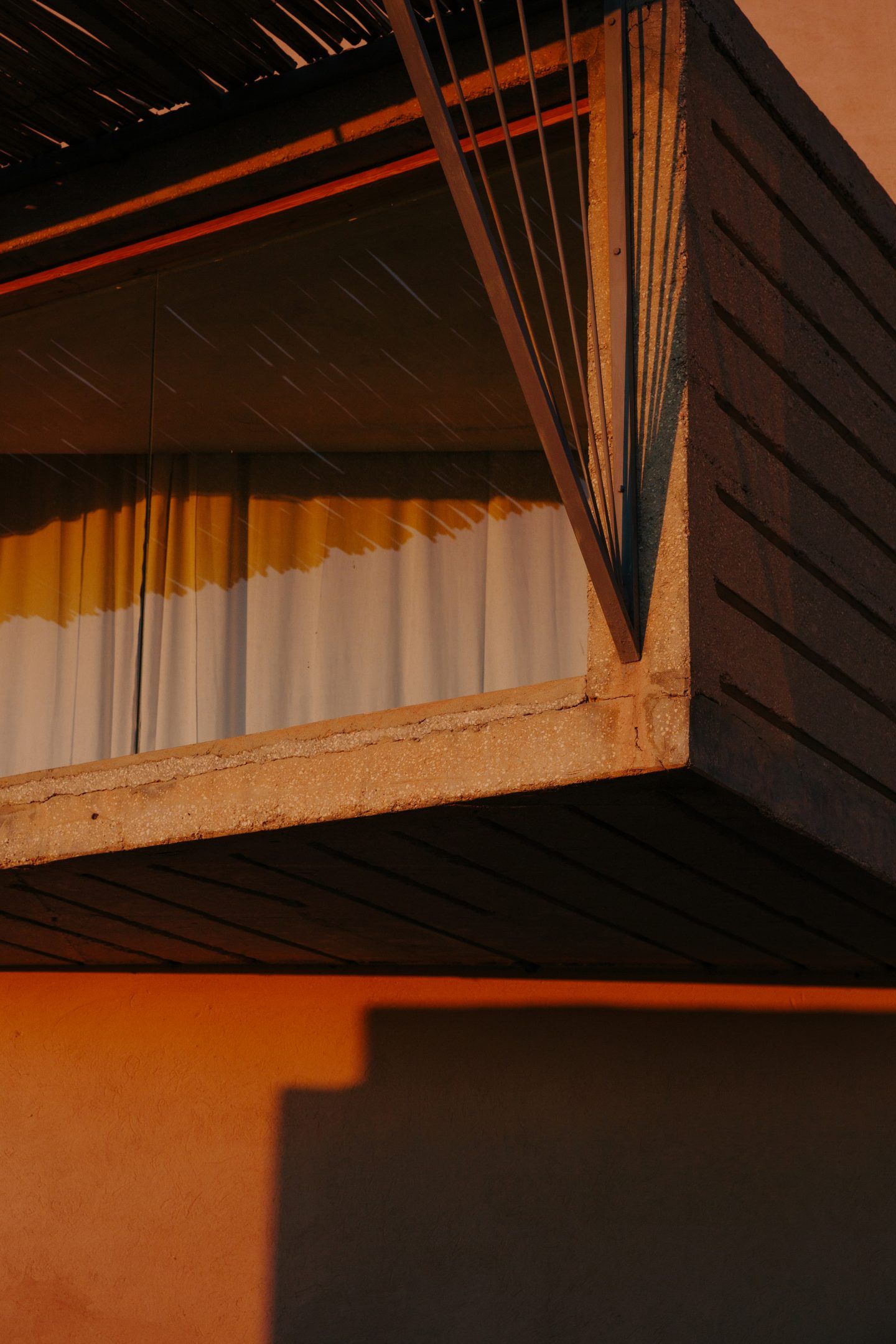
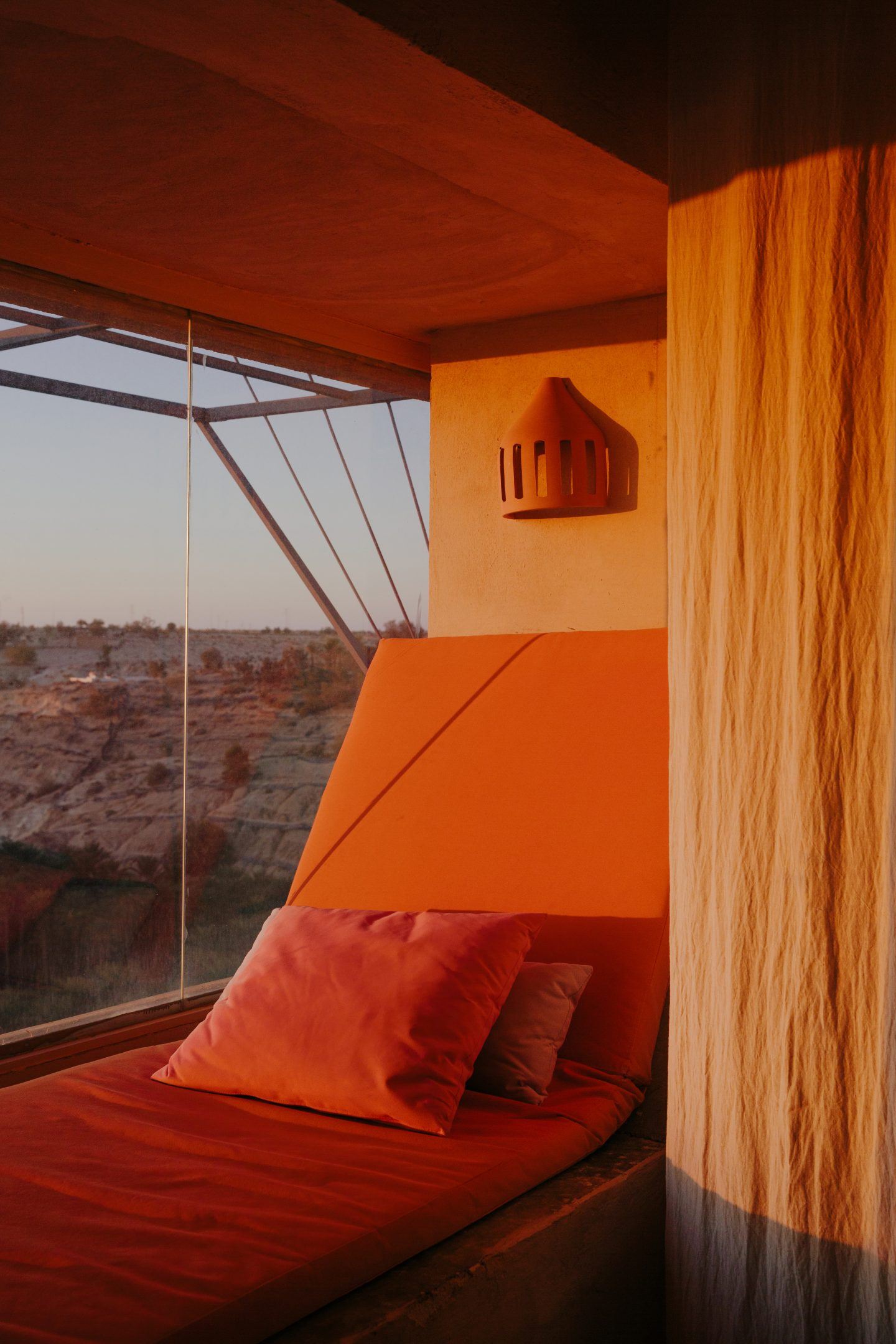
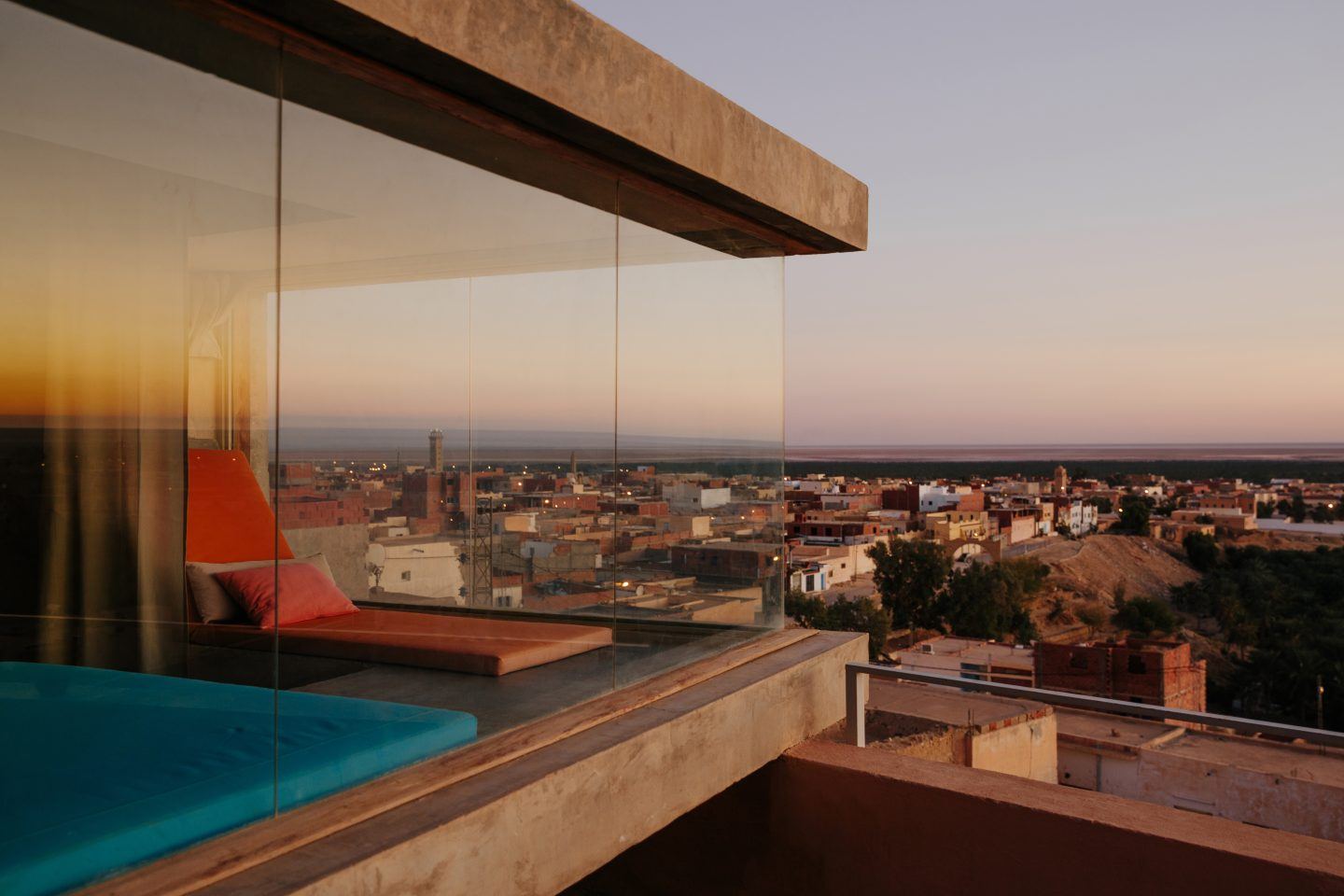
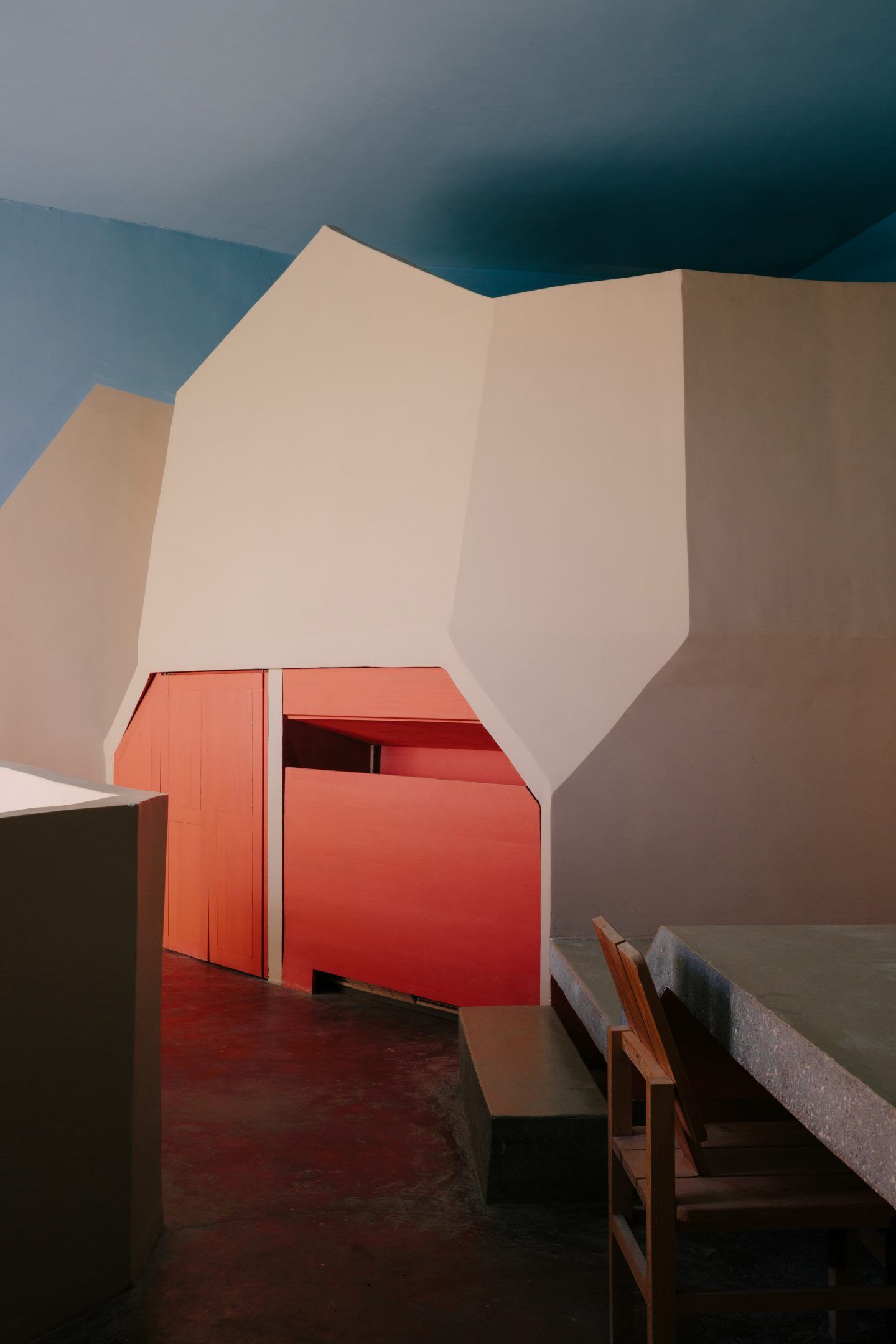
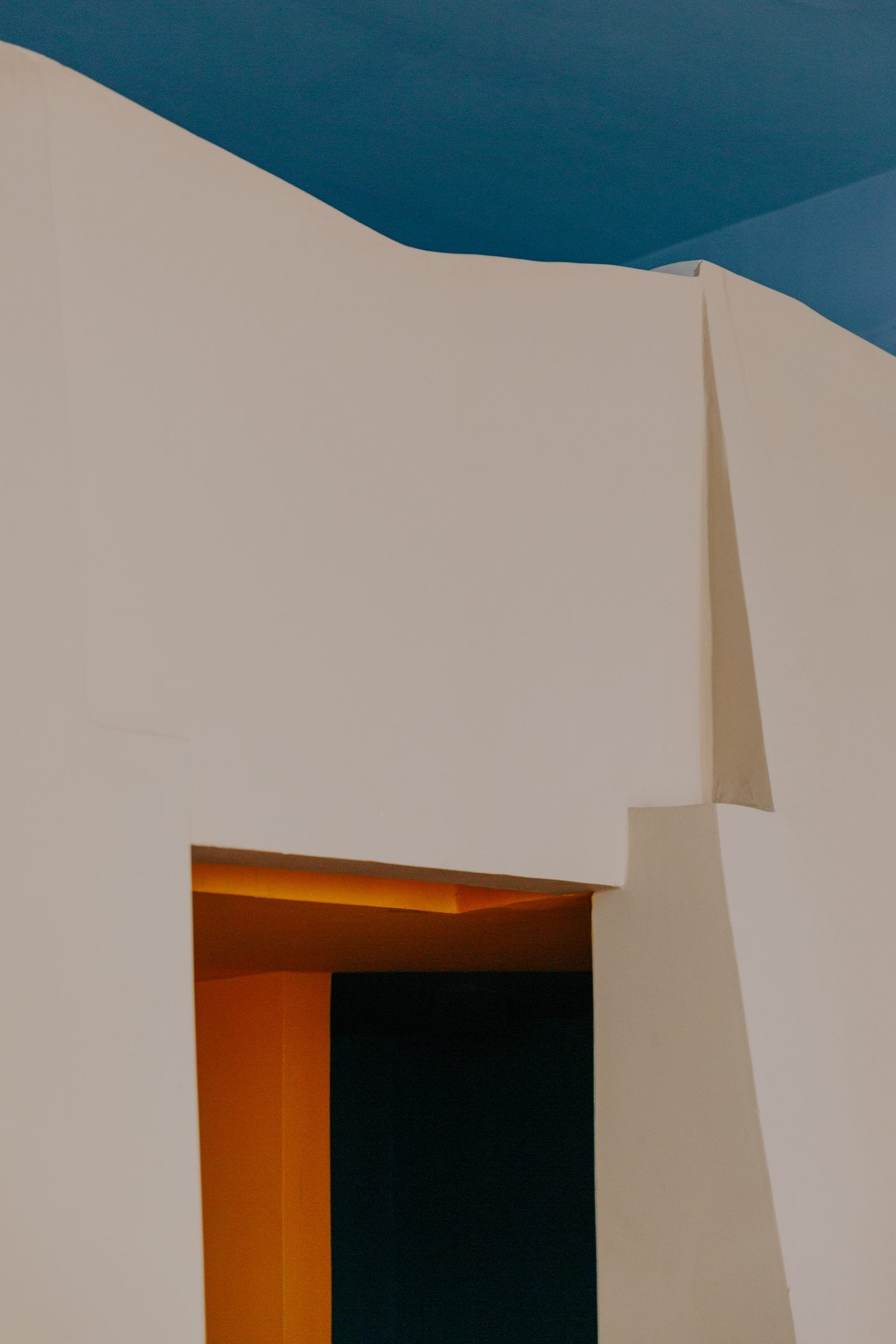
“Everything at ‘DAR HI’ is designed with sustainability and fair trade in mind,” Eoullarghi explains. Here, ‘being green’ goes beyond mere recycling. From reliance on clean energy resources to sustainable building methods, the balance between ecology and ethics is striking. The hotel was built entirely by local craftsmen using locally sourced materials like palm wood, limestone from Thala, marble from Foussana, and clay bricks made in Nefta. The pool and the hamman use geothermal energy for heating and are replenished with springwater that comes directly from the desert. Similarly, an organic vegetable garden supplies the compounds’ kitchen while revitalizing traditional oasis agriculture. “The place was developed with local philosophy,” he says. “Our vision was to bring together community and culture in a mindful conversation of natural resources, impacting the land as little as possible, while promoting self-sufficiency.” Built a decade ago, ‘DAR HI’’s sustainable approach was new to the region. “Sustainable tourism is the future of tourism and we remain committed to it. Today, Tunisia boasts several ecological projects, such as the permaculture that we are developing alongside ‘DAR HI’ in the oasis of Nefta. In 2010, no one was aware of permaculture,” he adds.
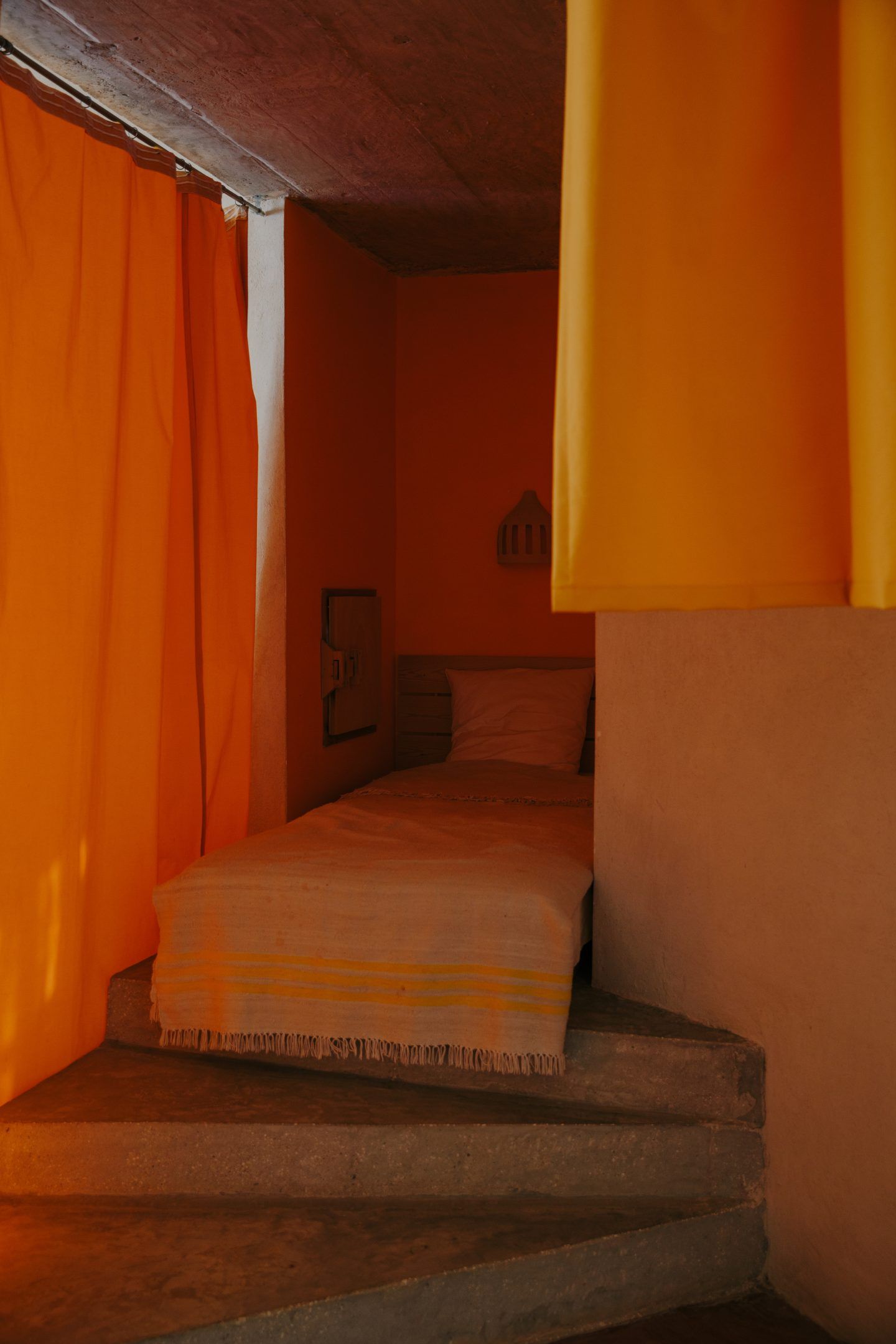
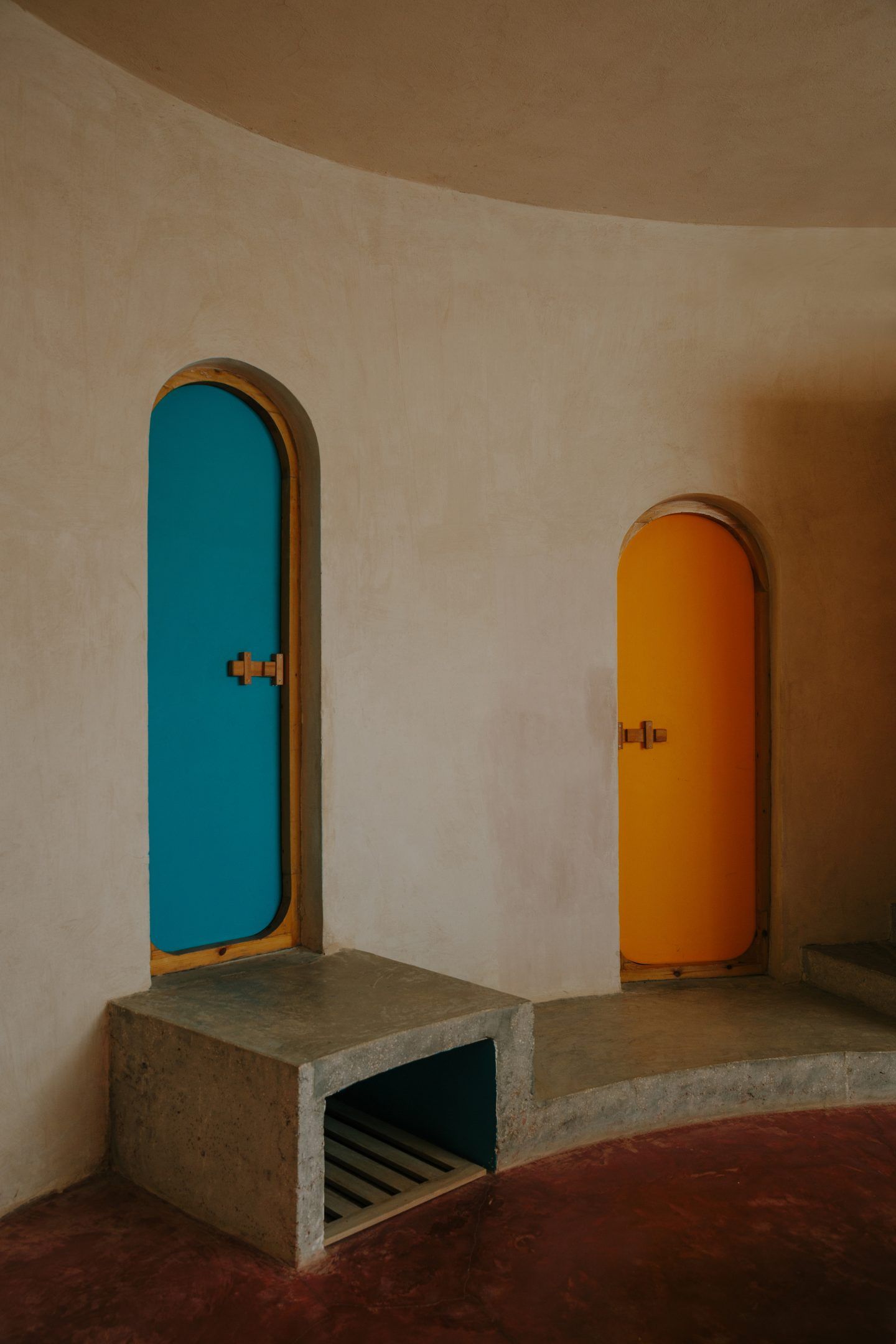
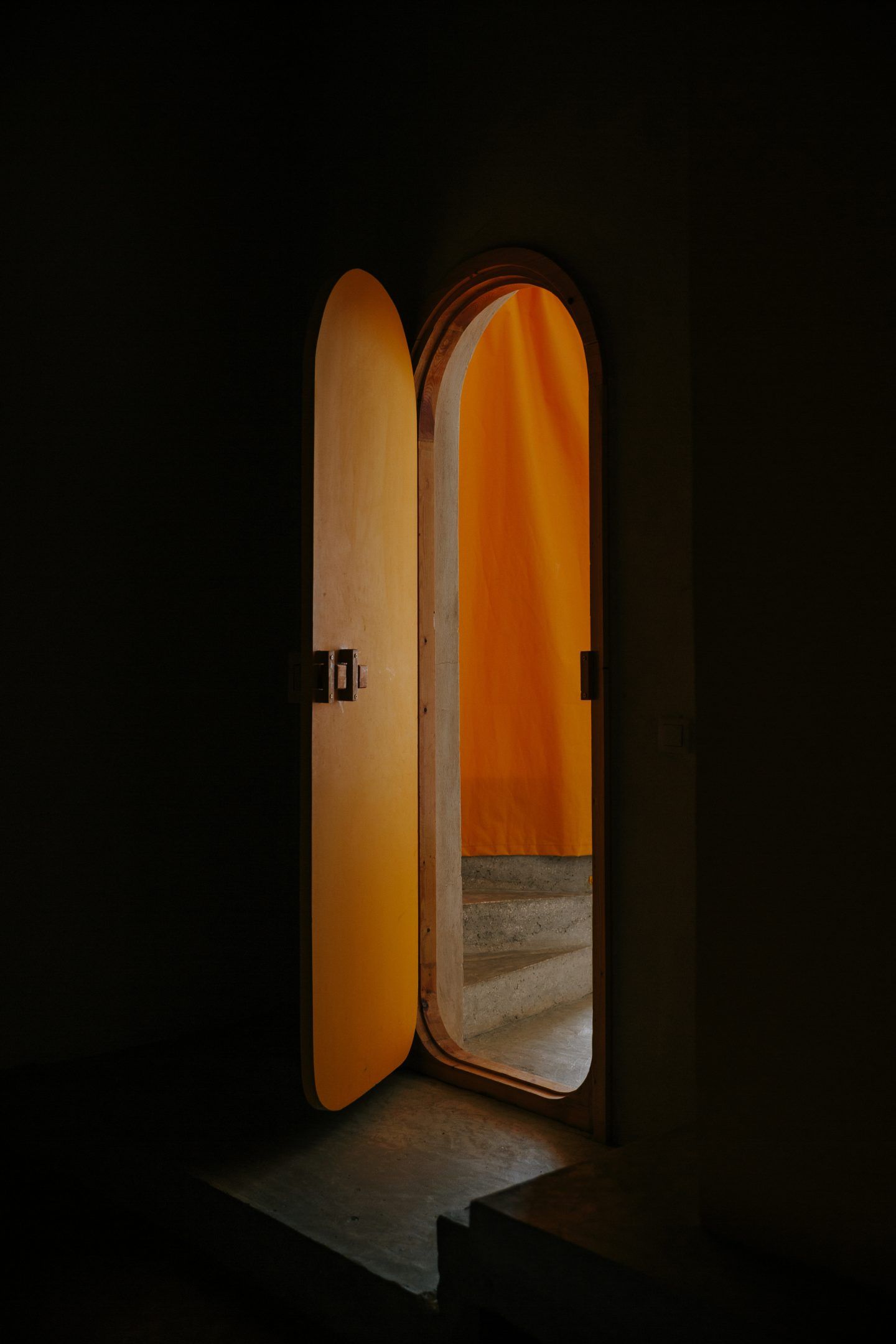
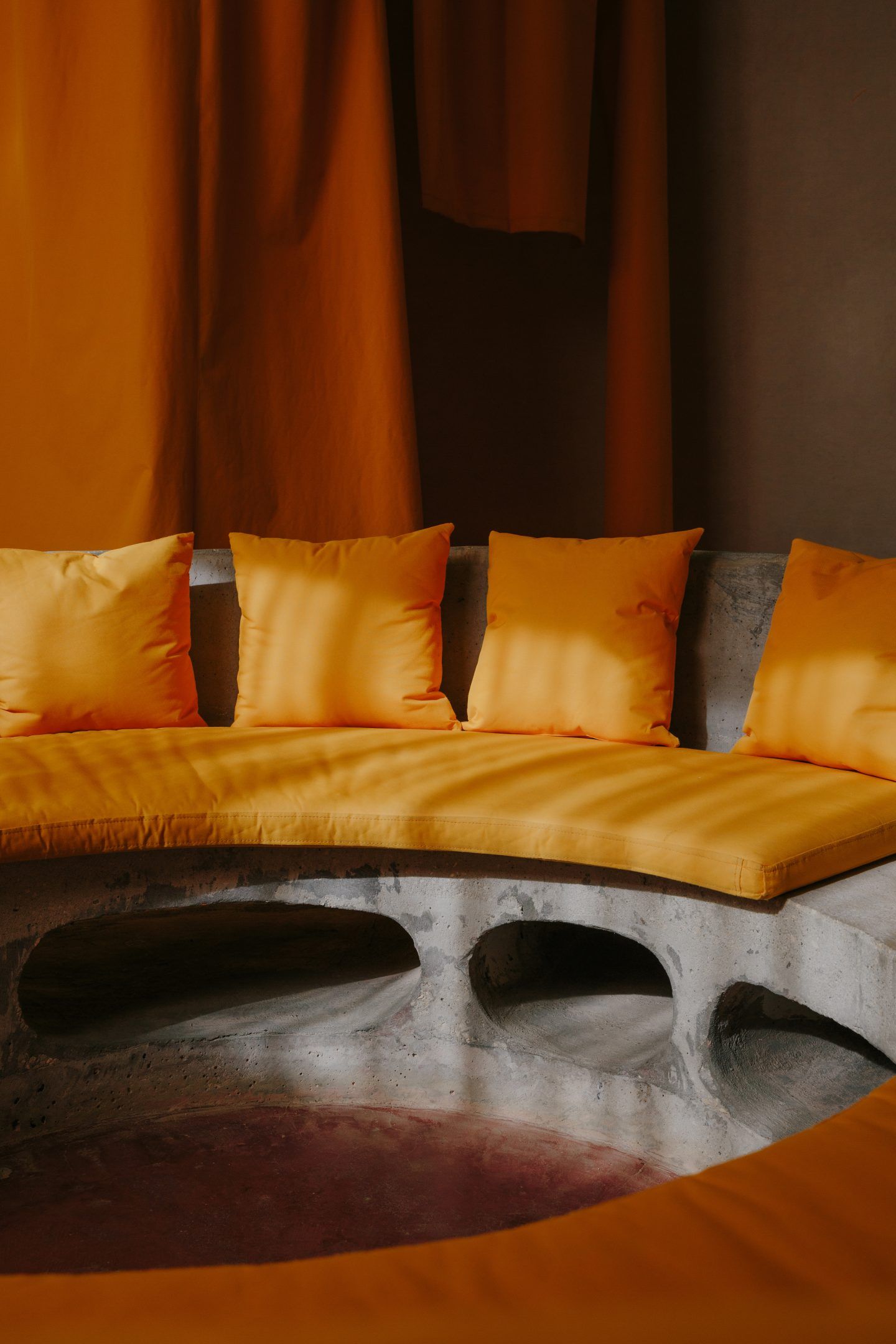
‘DAR HI’ brings attention to the rich traditions of the region in a multitude of ways. Dinnertime best exemplifies this; meals combine simple sophistication with fidelity to heritage. Not concerned with fine dining or high gastronomy, the restaurant offers simple culinary experiences with recipes slightly twisted by the Parisian culinary consultant Frédérick E. Grasser Hermé. Dinner is always table d’hote style, and is best accompanied with local wines.
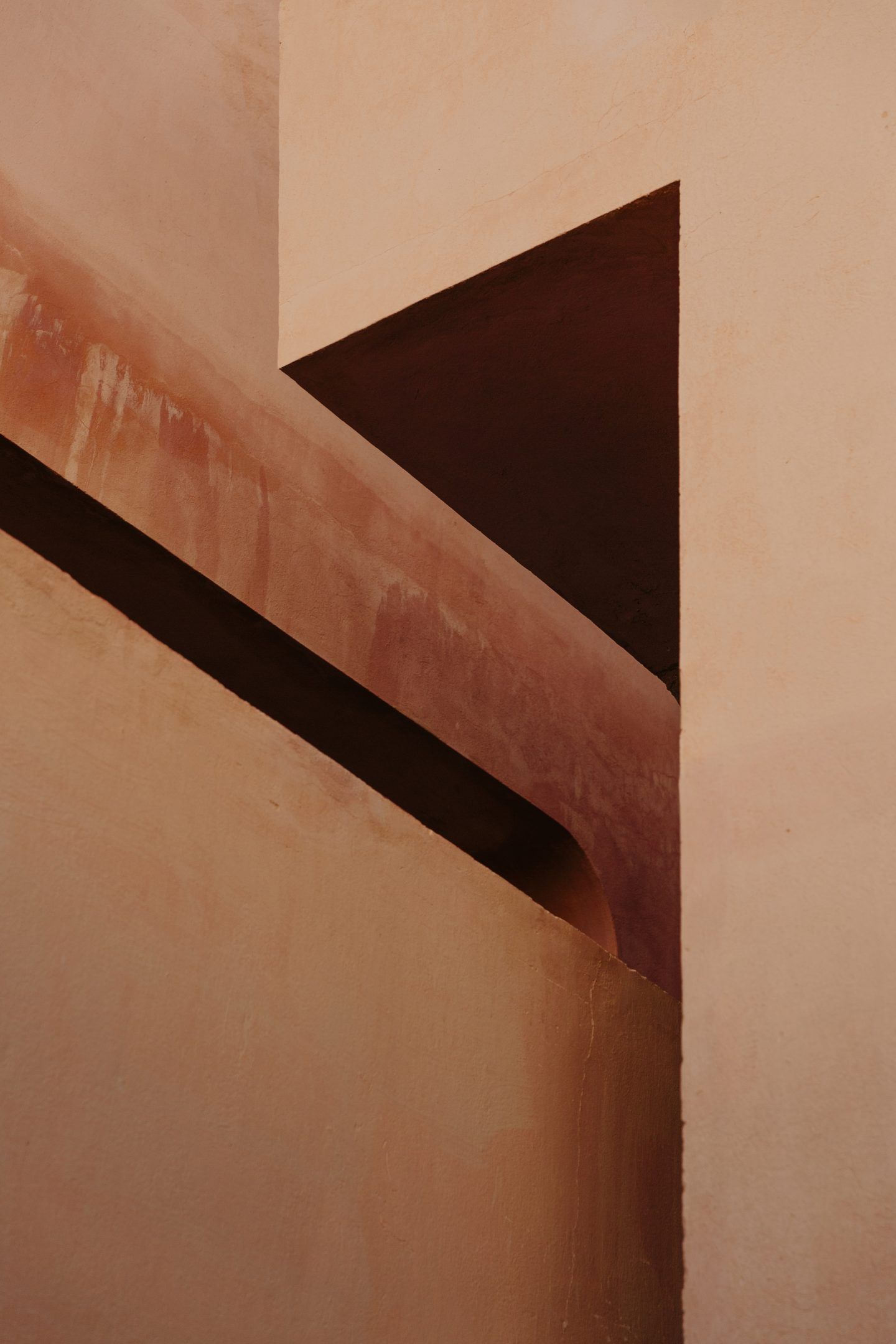
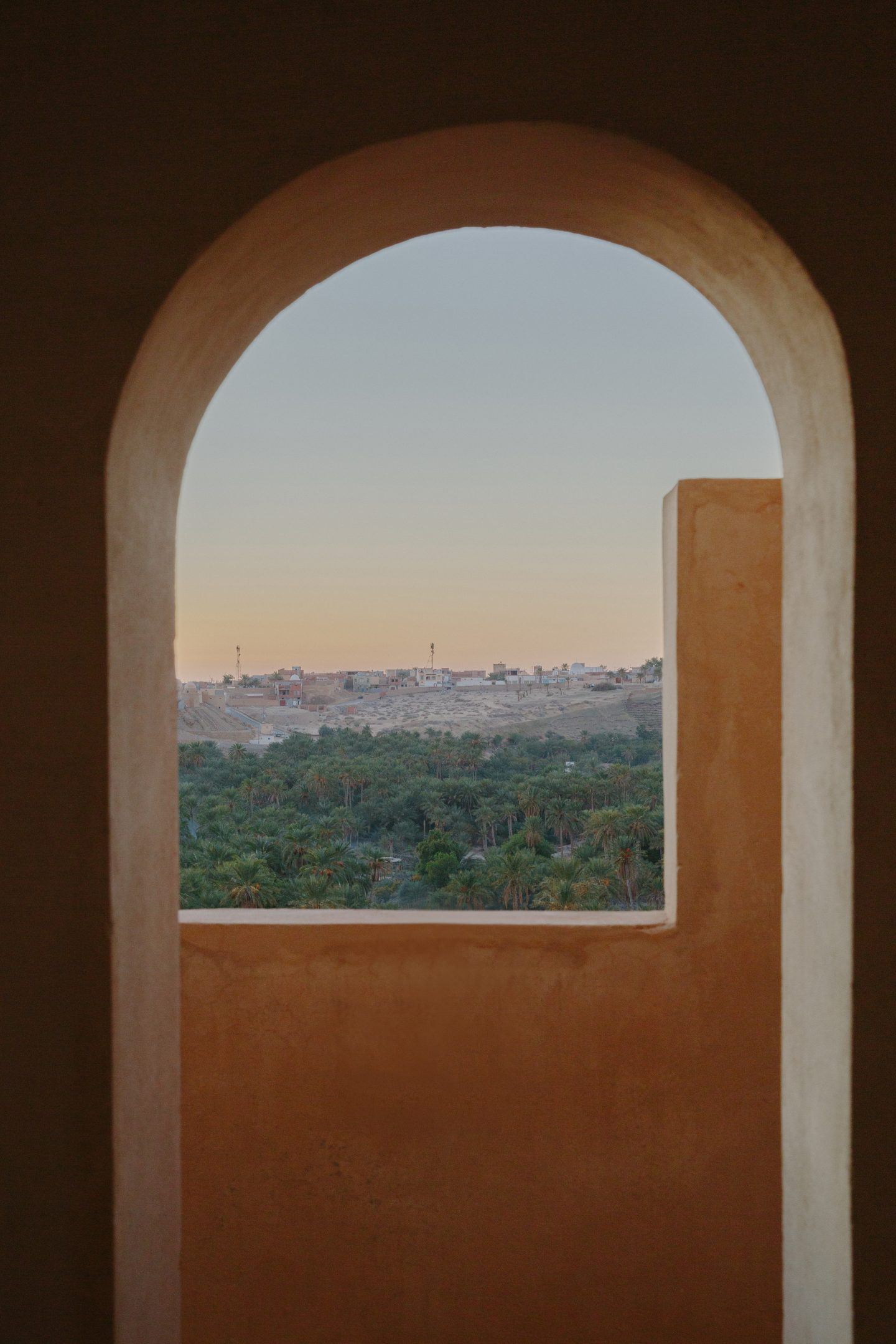
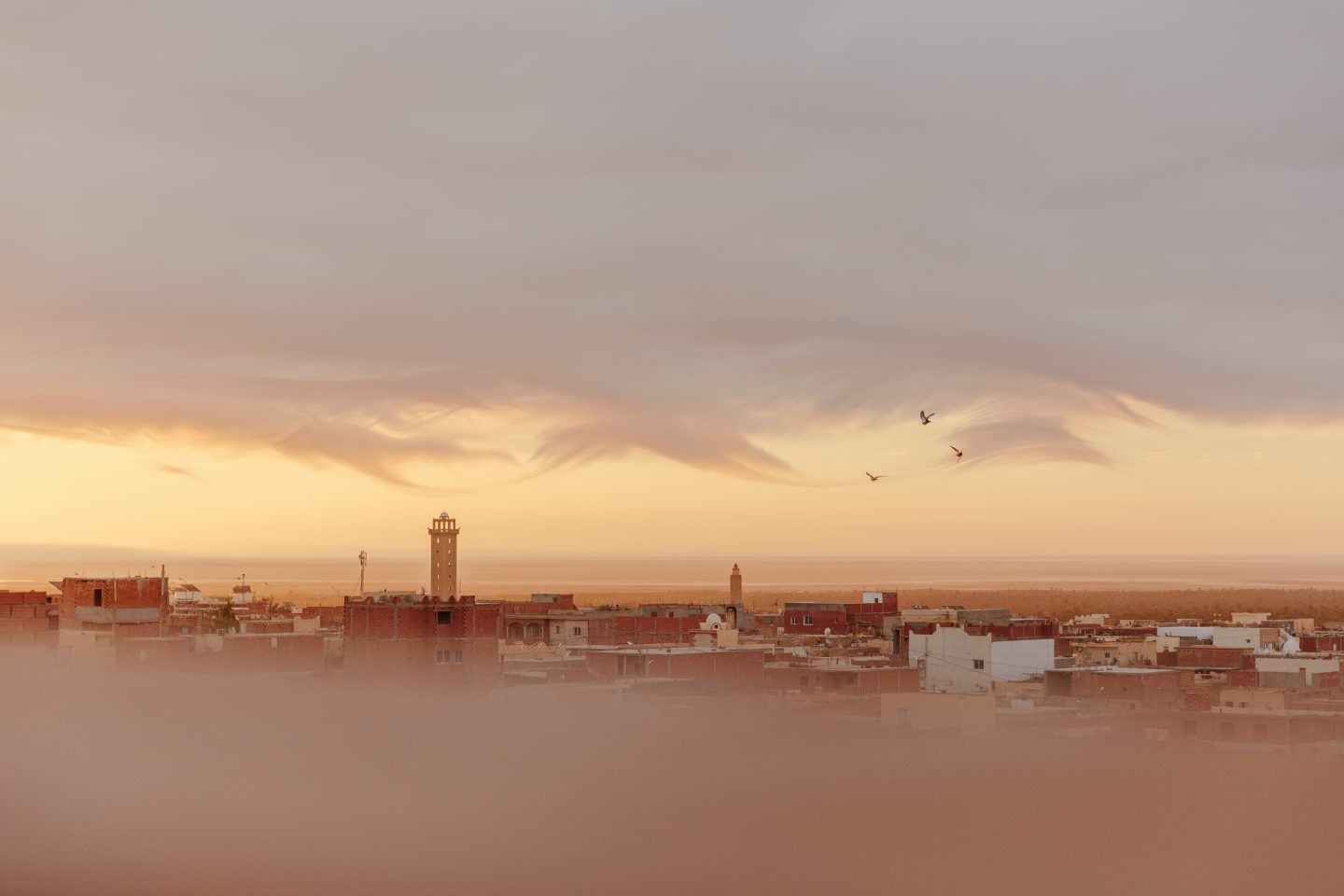
Beyond its design and ecological efficiency, what makes ‘DAR HI’ distinctive is the hotel’s natural and generous propensity for freedom, discreteness, and tranquillity. Uniting the spiritual power and simplicity of a meditation center with the rejuvenating atmosphere of a Spa center, ‘DAR HI’ is the ultimate retreat for the body and the soul, a space for guests to dive into the peace and clarity of present-moment awareness. “Our hope is that the client can meditate through the landscape, the nature, and the desert,” Eoularghi concludes. It is a space in which to experience withdrawal from the bustle of the city through the power of the awe-inspiring surroundings. ‘DAR HI’ has a remarkable fondness for silence; quietude is rarely broken at the eco-lodge, especially at night. As the clear Tunisian sky transforms into a glowing violet and the Mediterannan sun dips closer to the horizon, the only sound that rips through the stillness is the muezzin call to the last prayer.
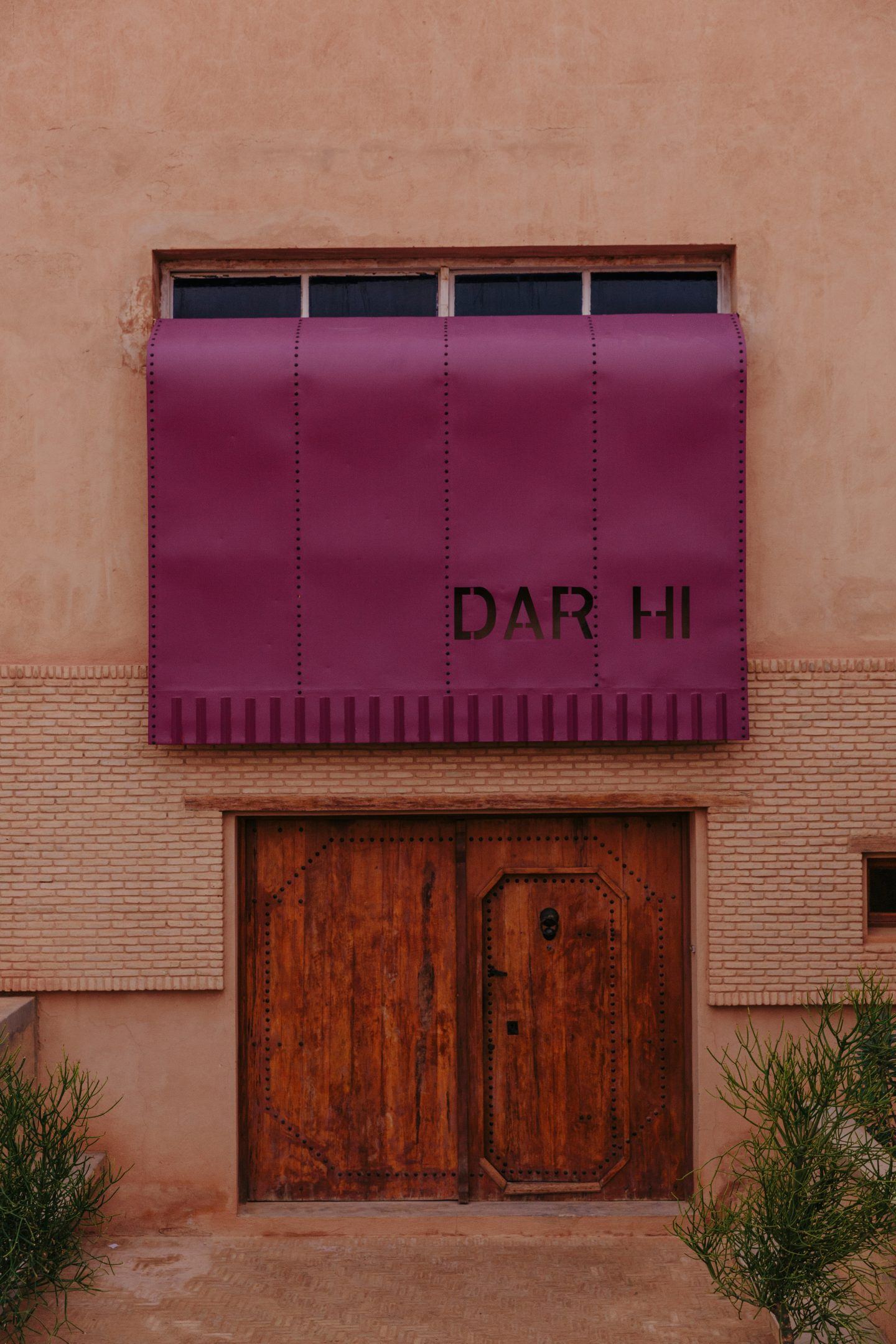
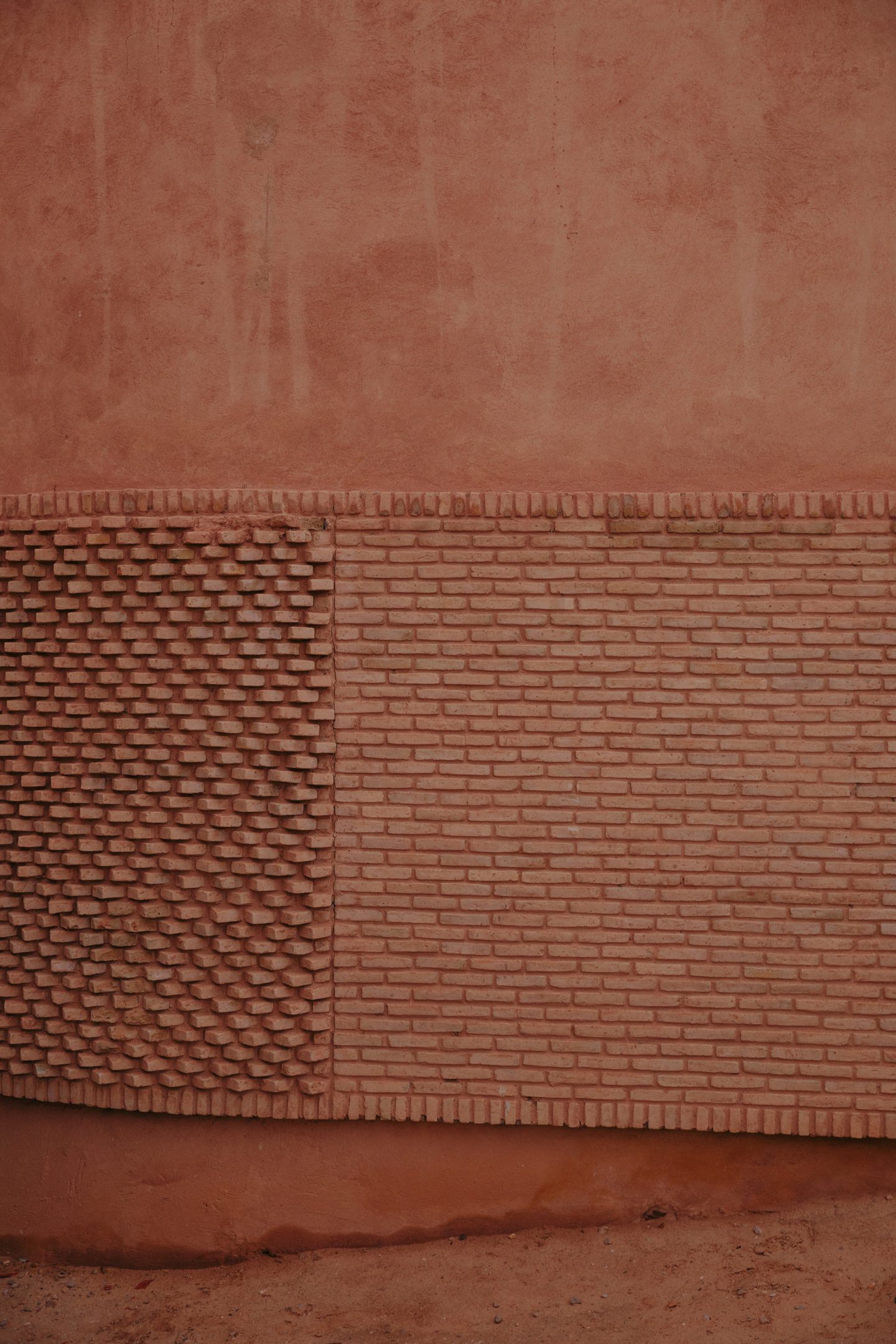
ADDRESS
DAR HI
Quartier ezaouia
Nefta, Tunisia
CONTACT
Tel: +216 76 432 779
Website
–
This feature was created in collaboration with Openhouse Magazine and Discover Tunisia.
Images © Marina Denisova for IGNANT Production
